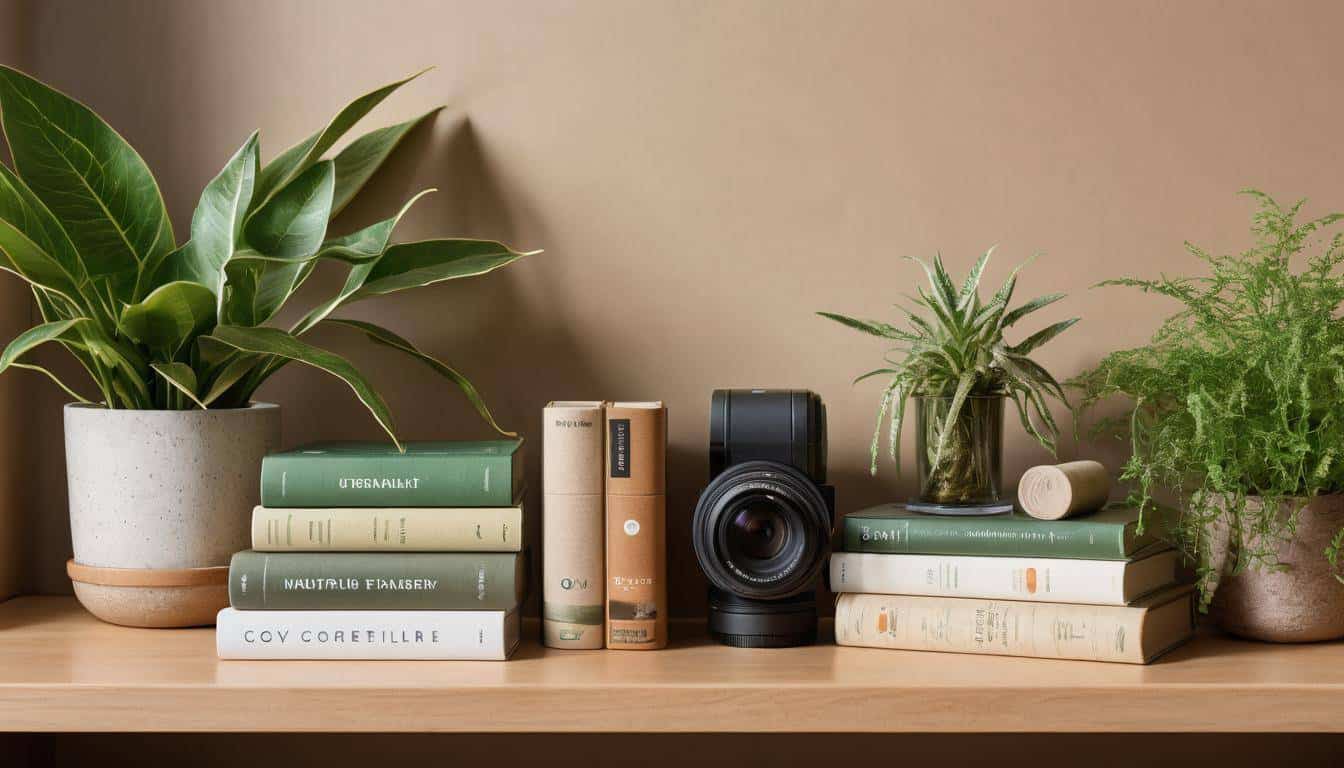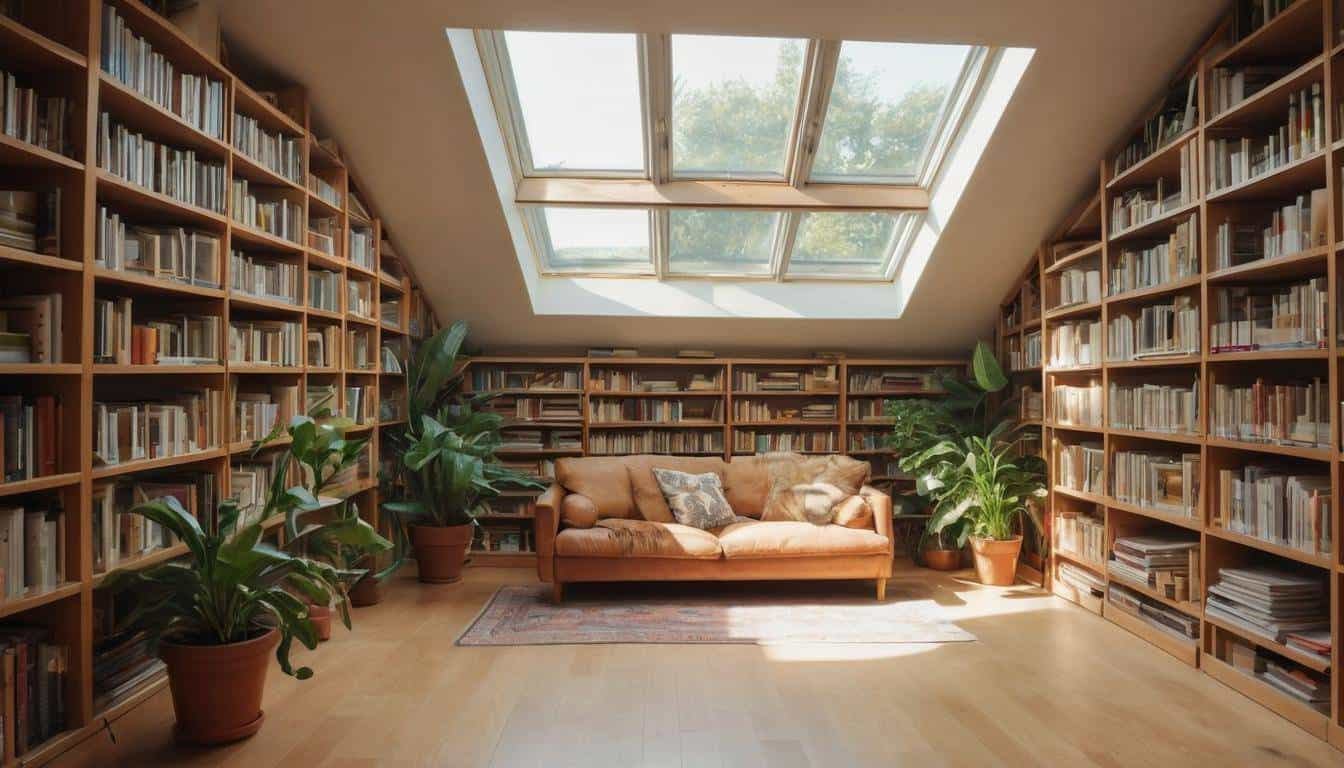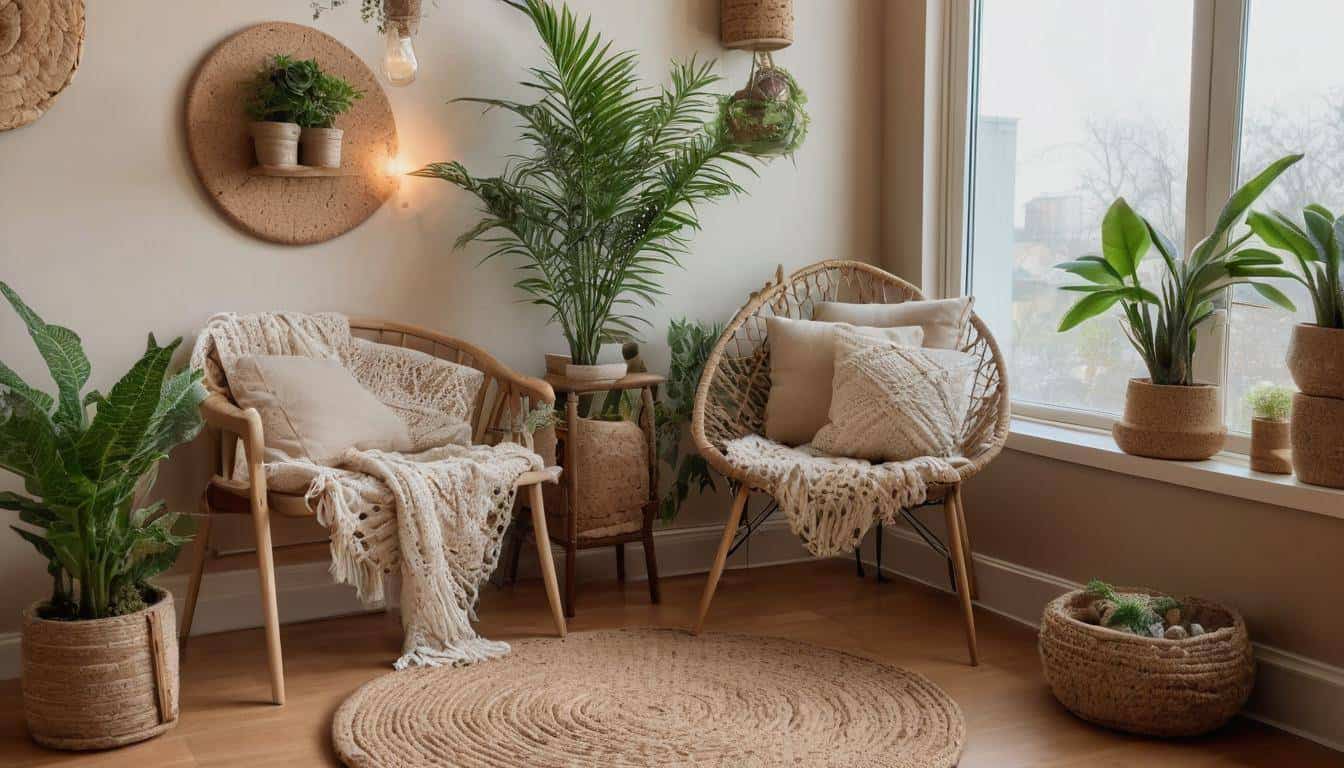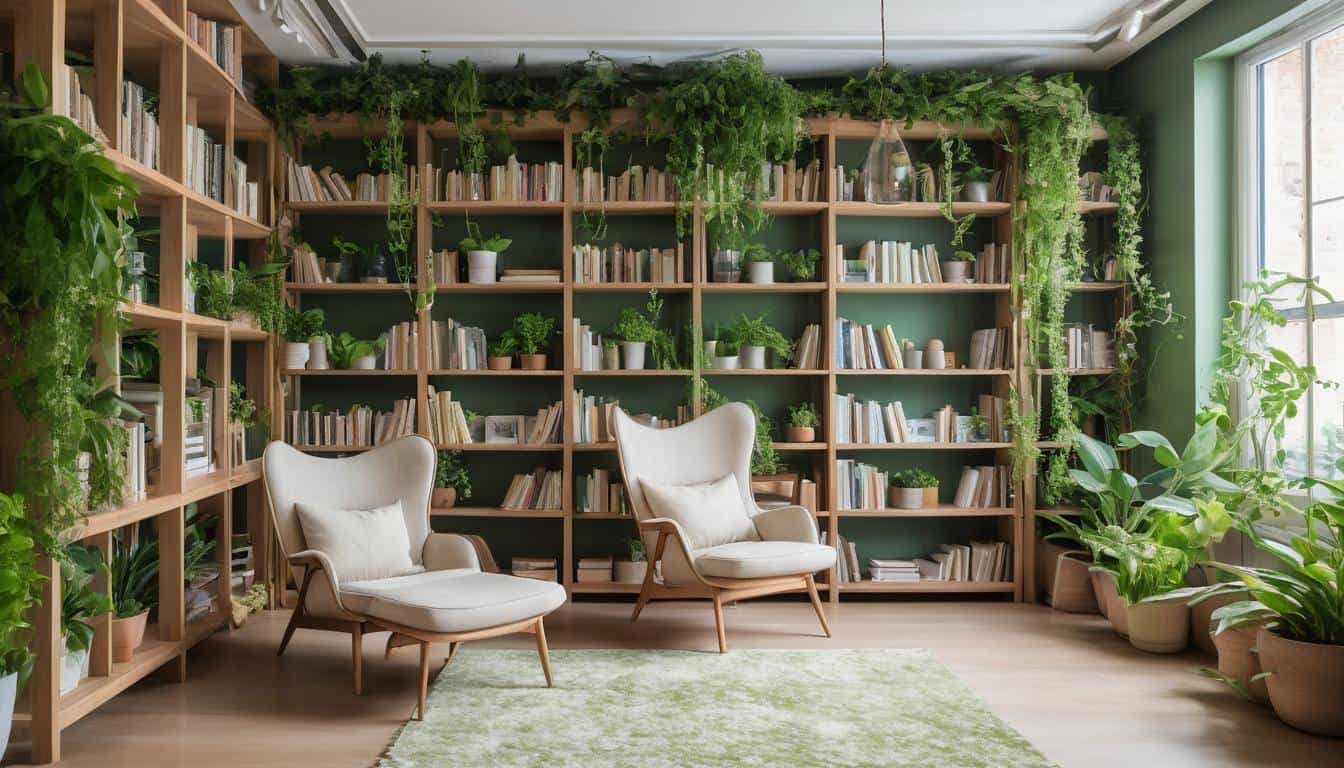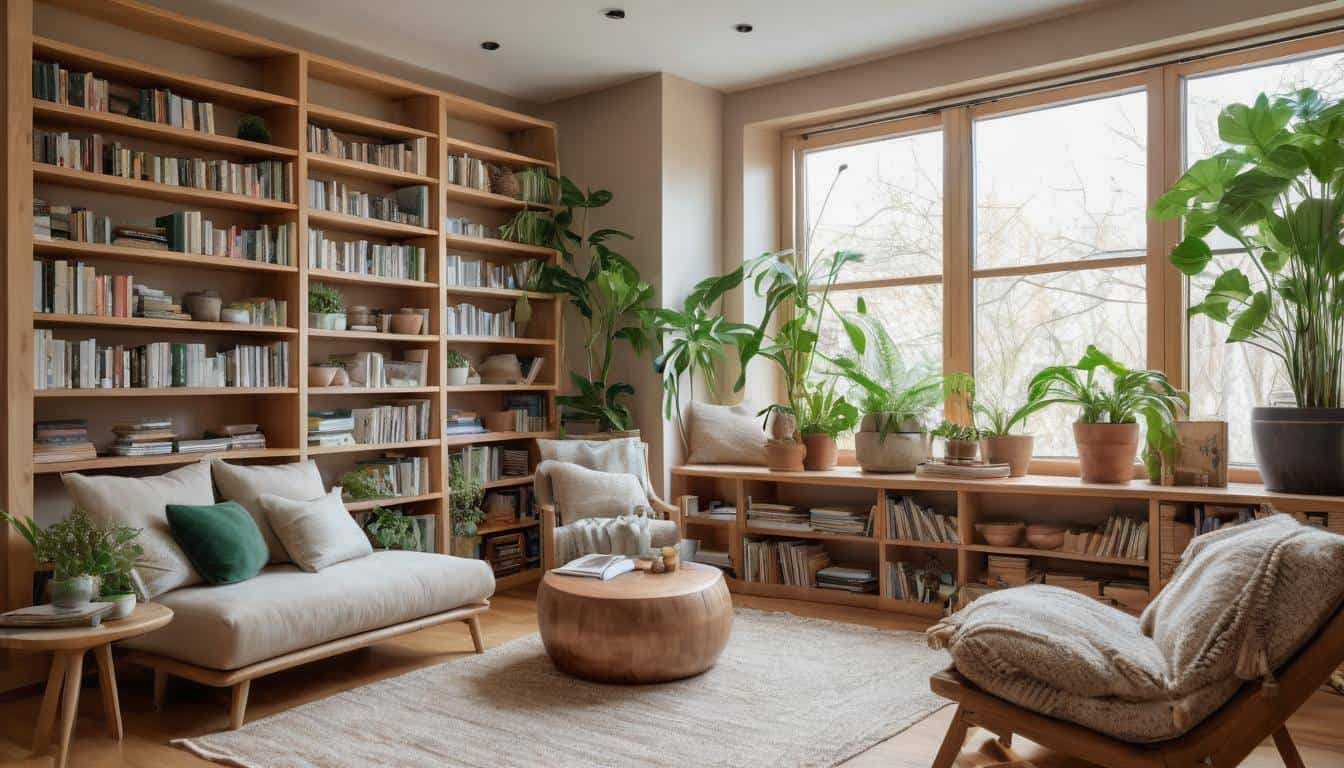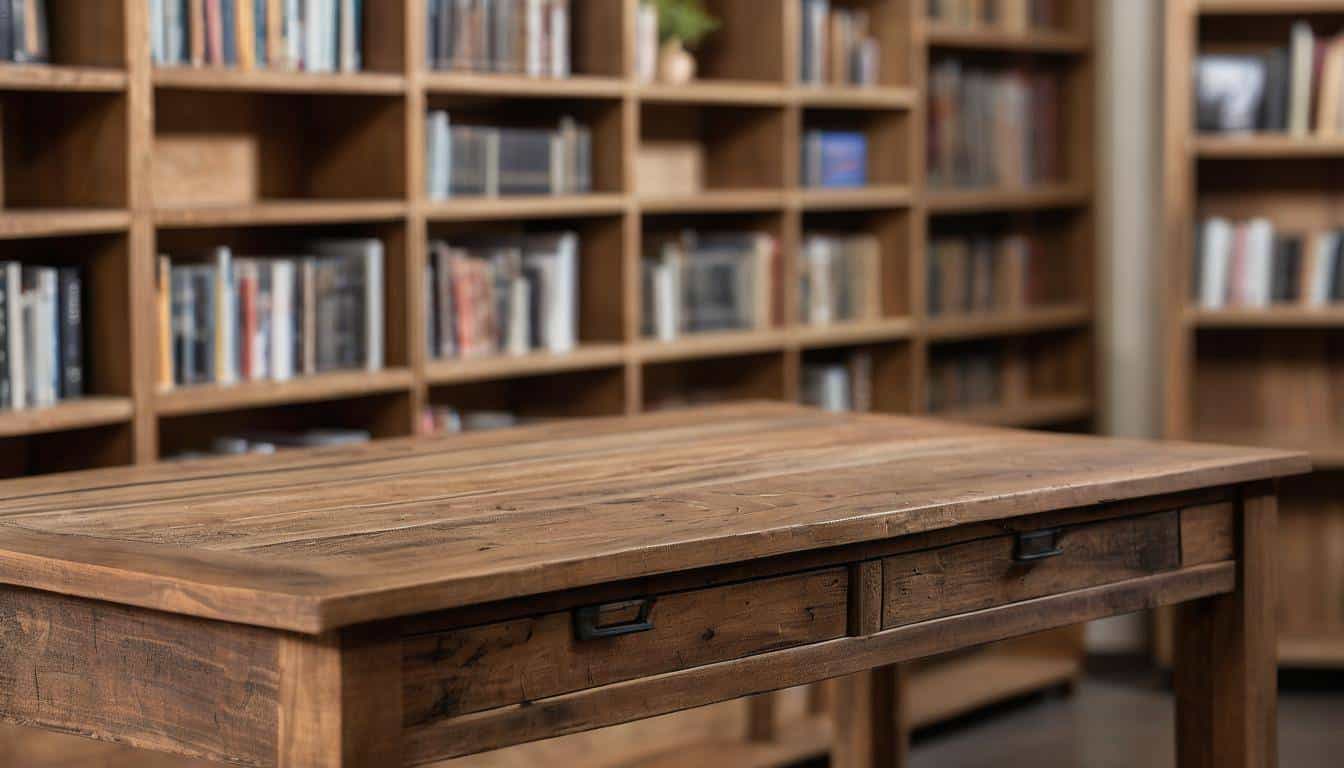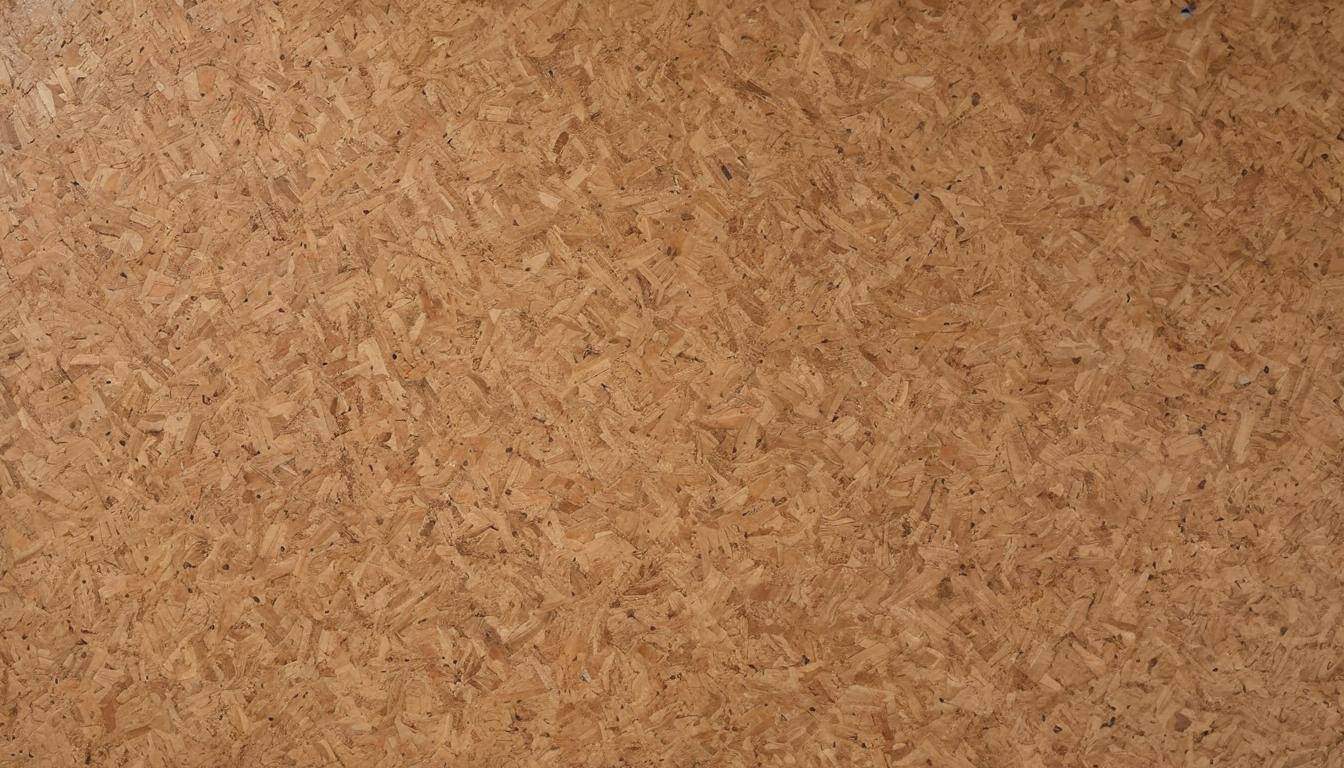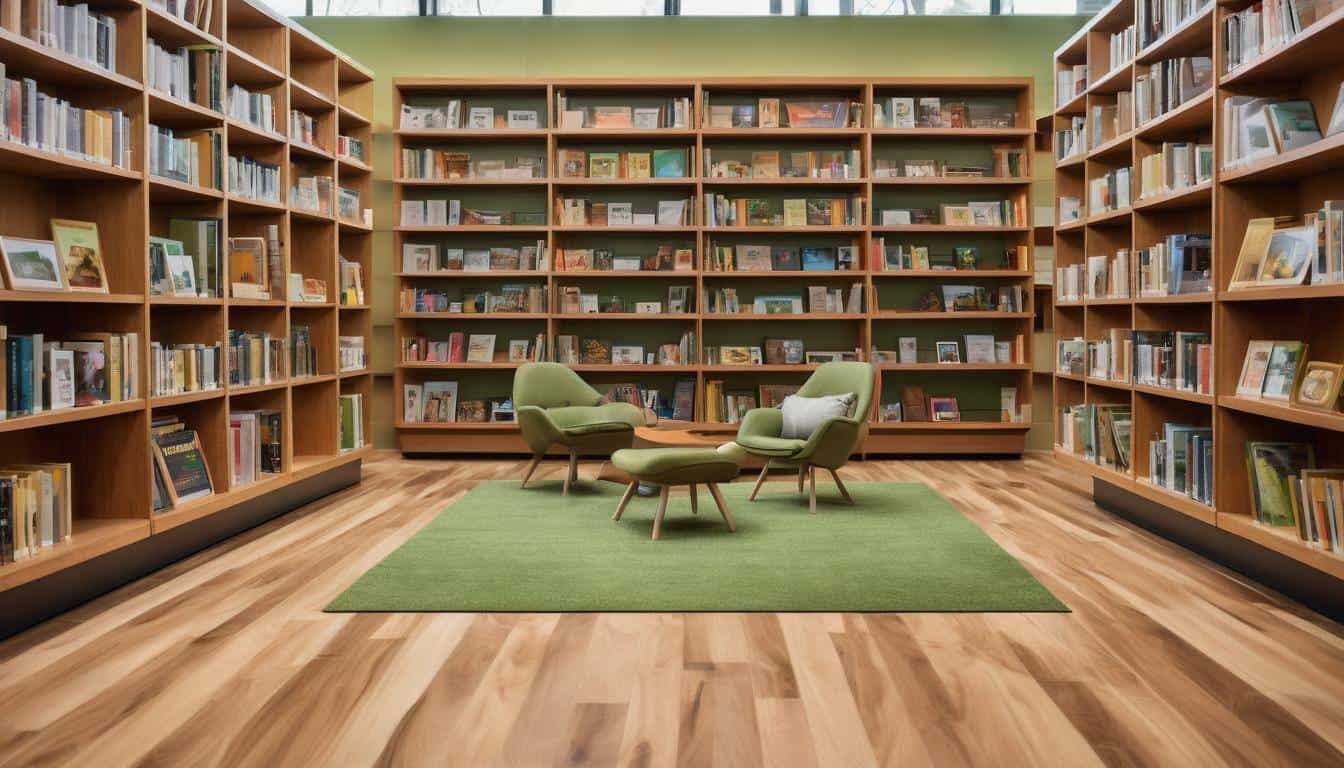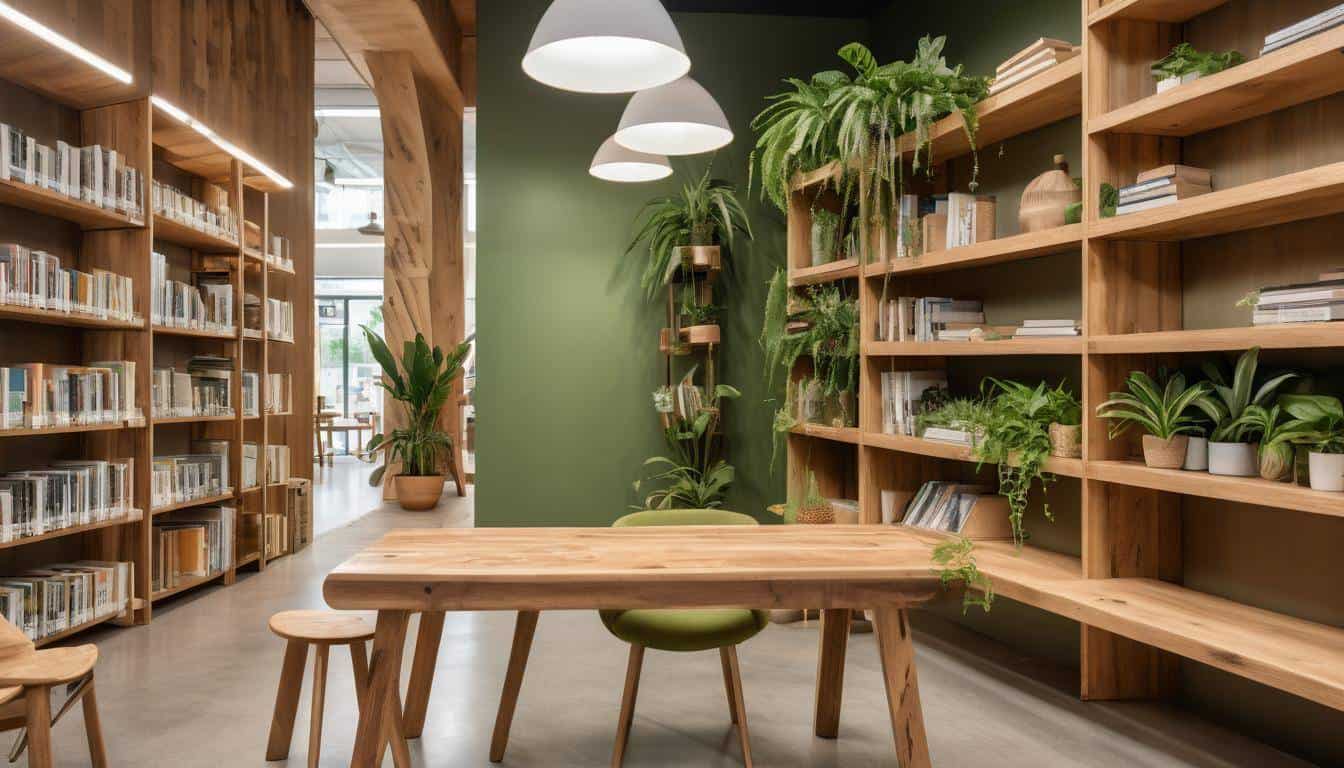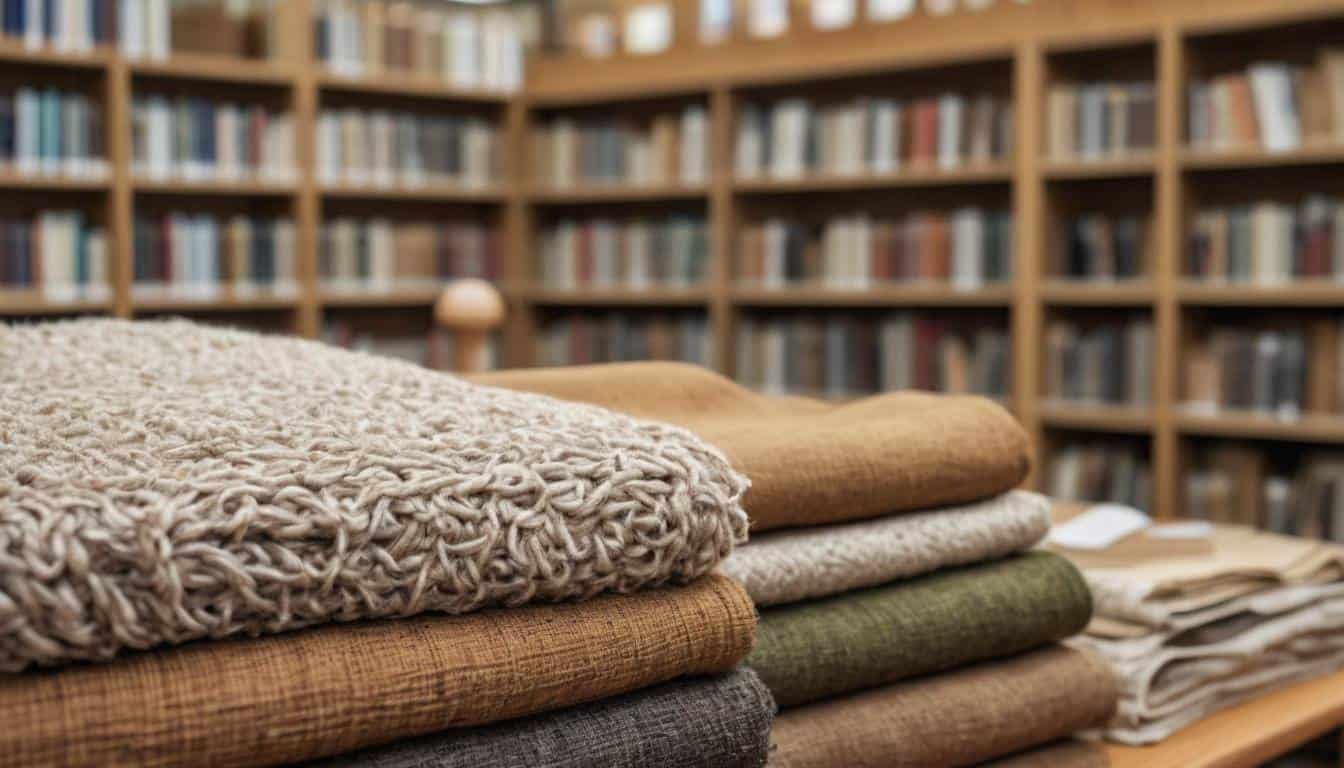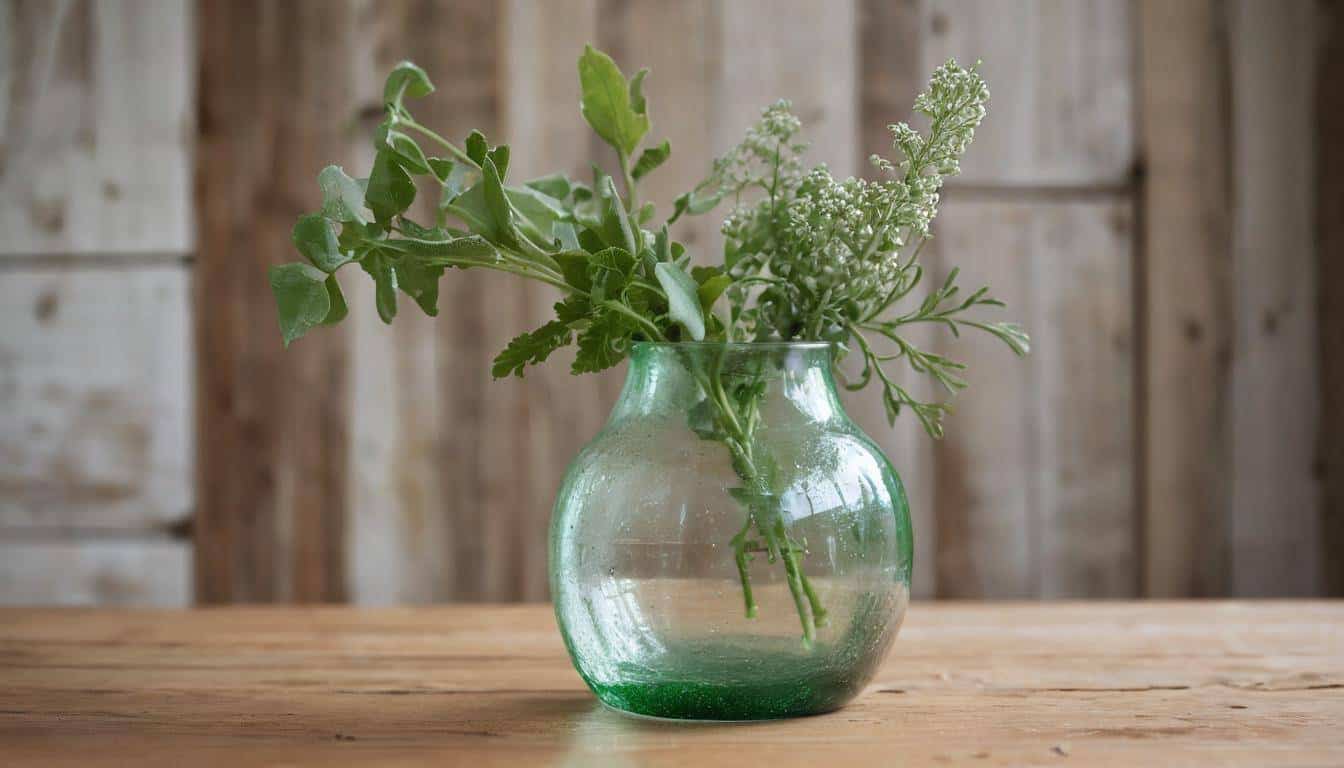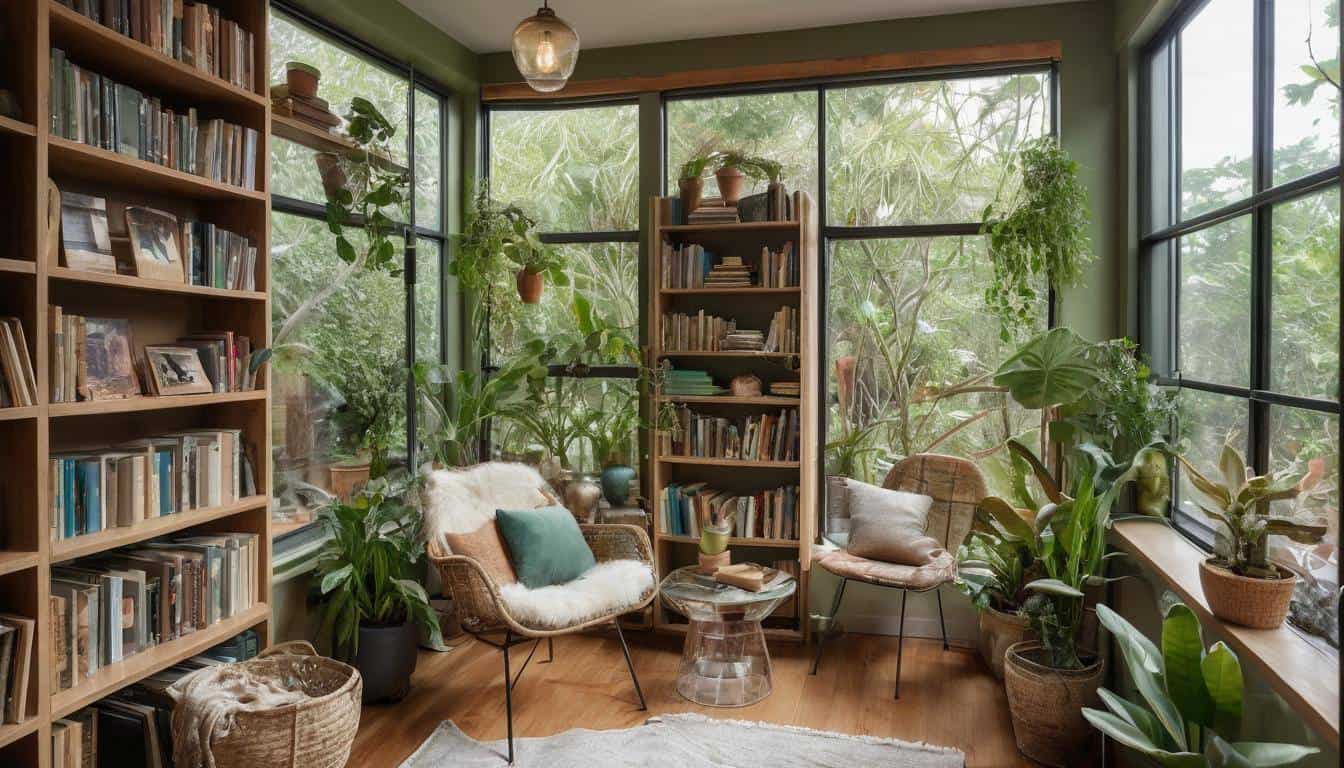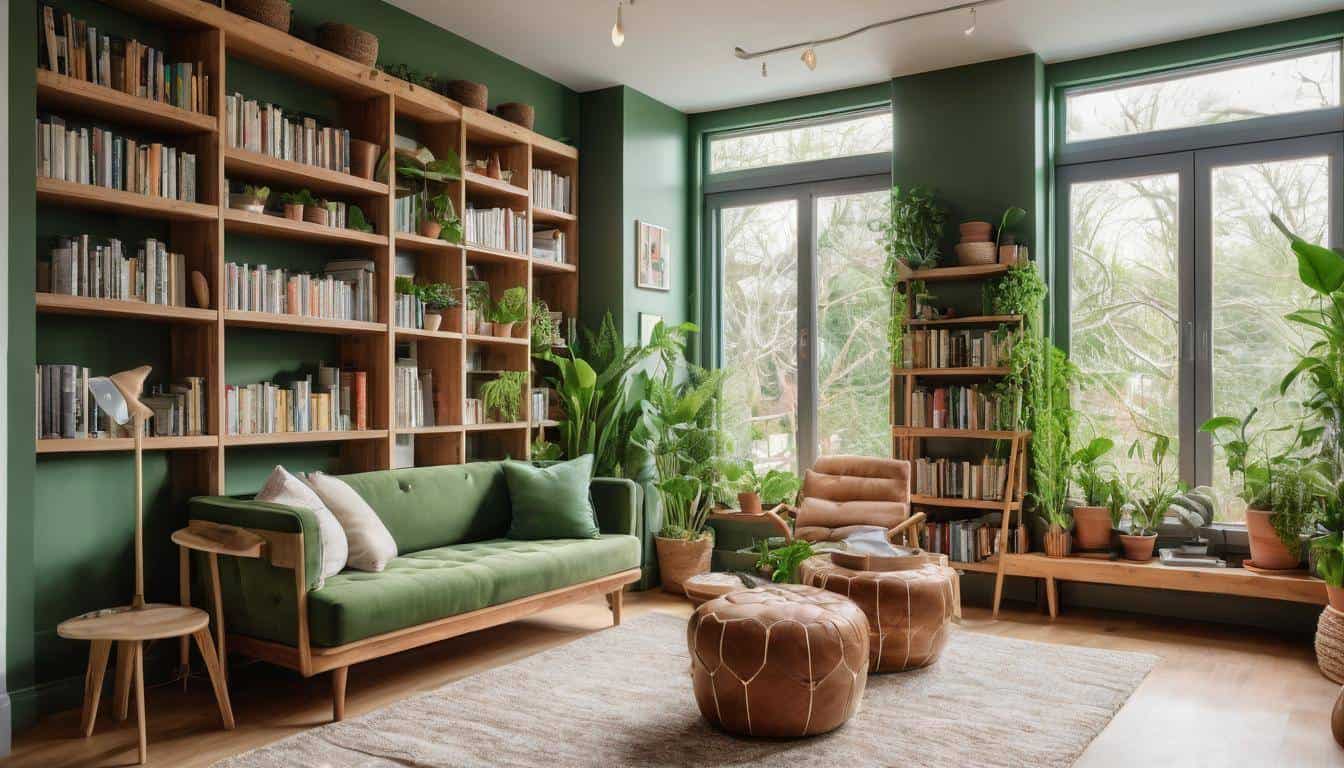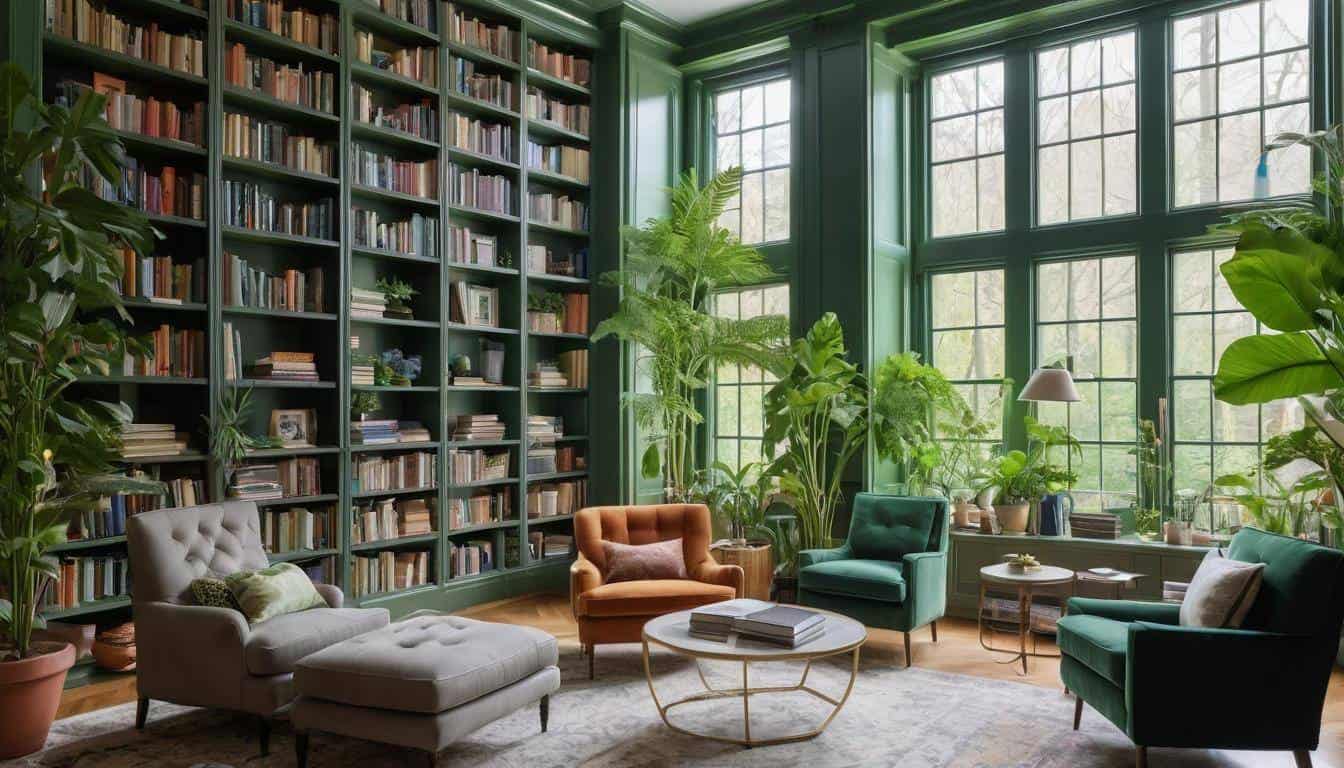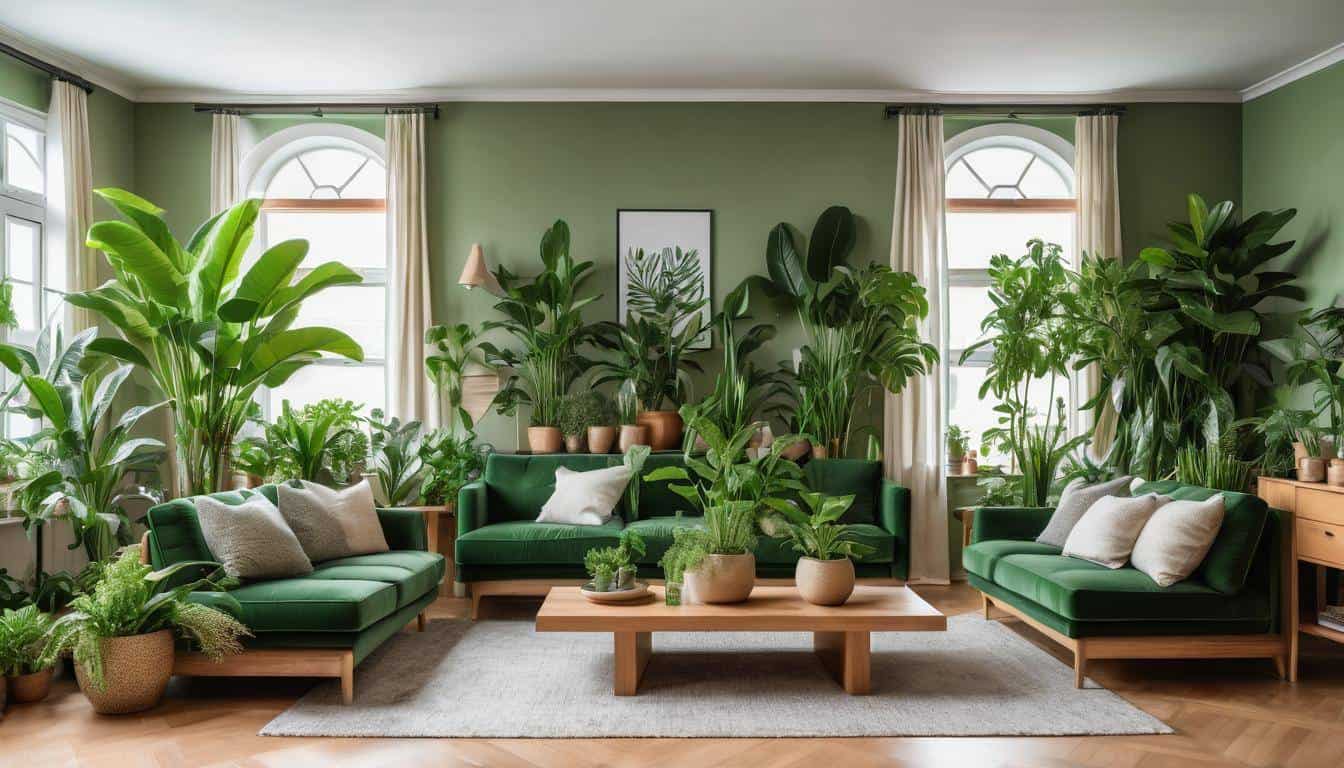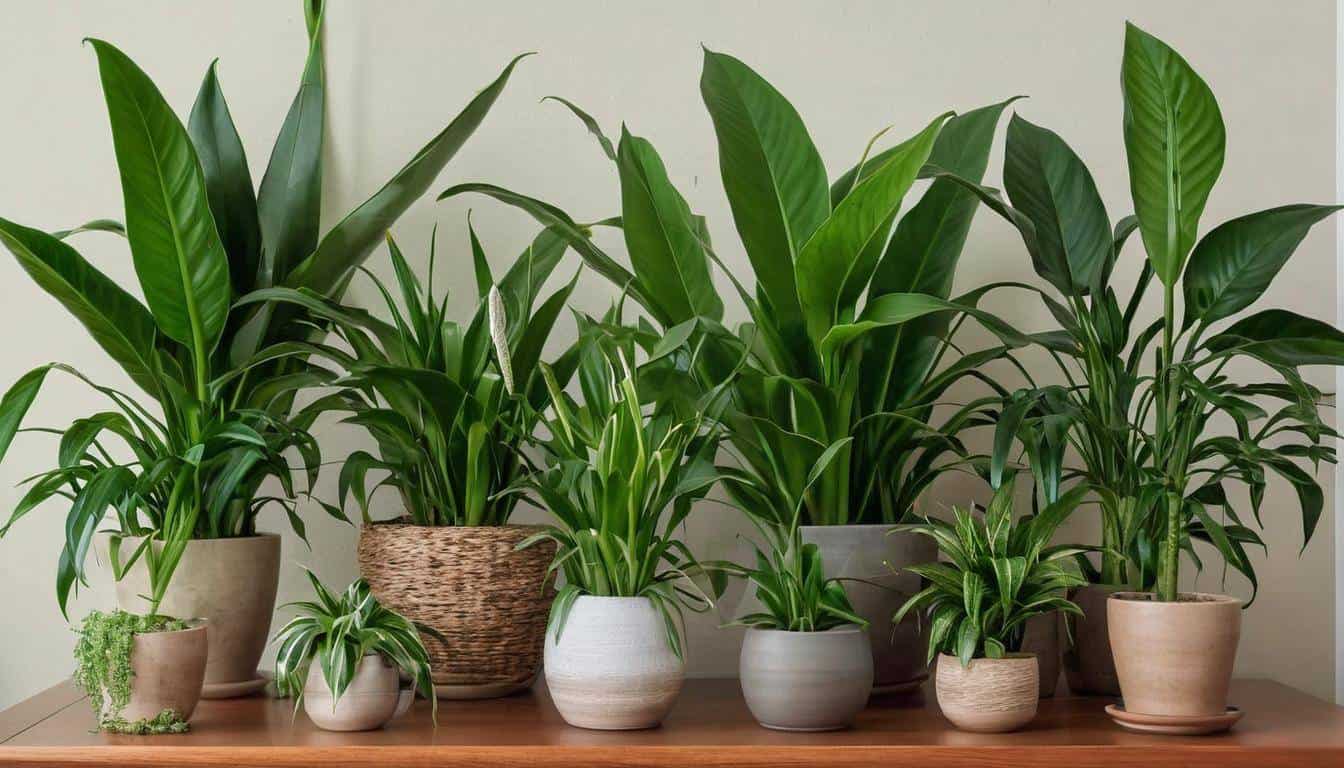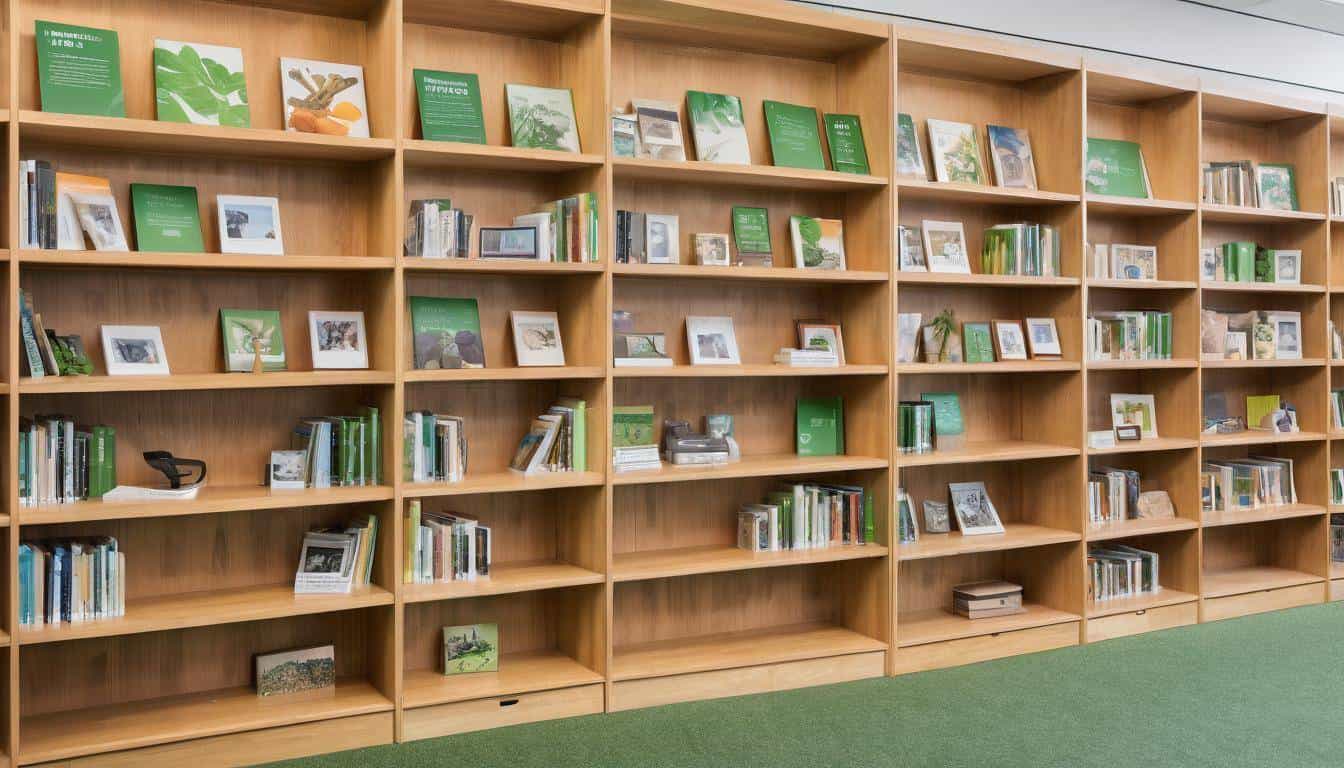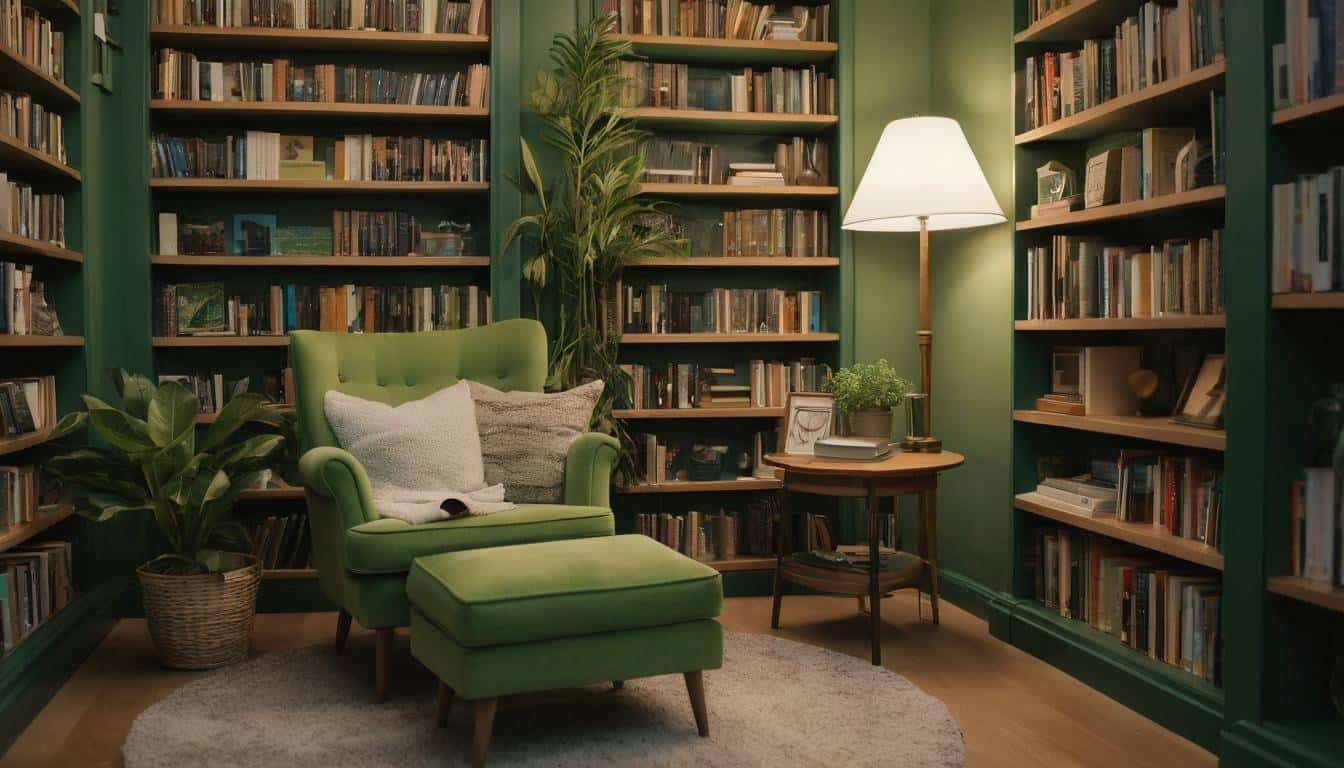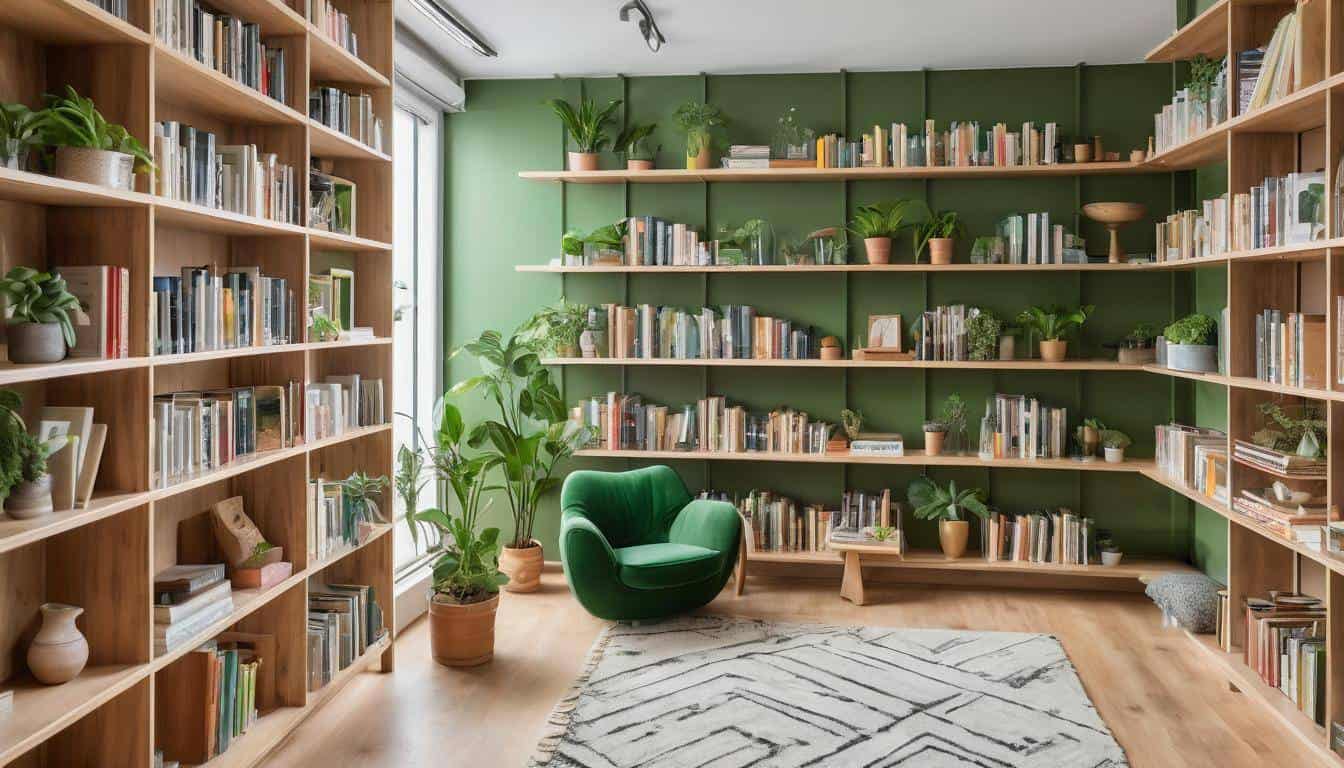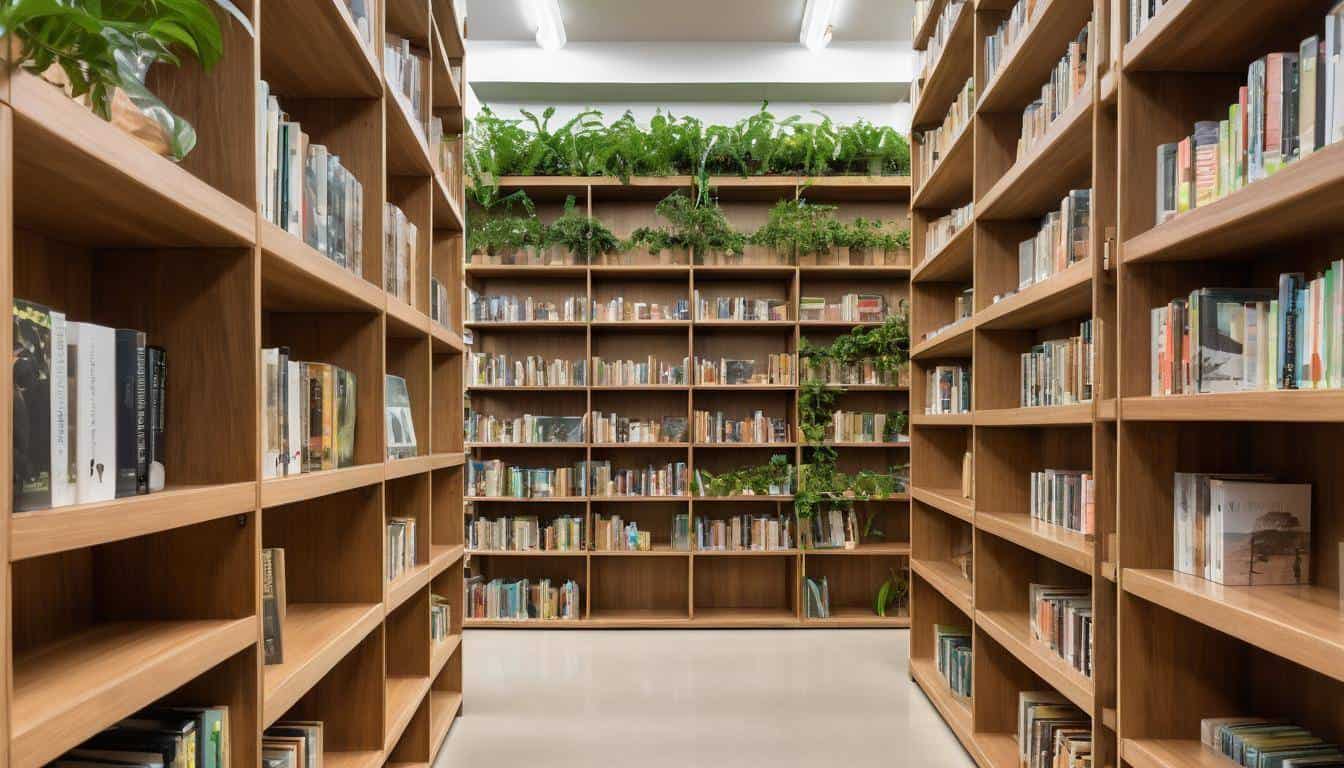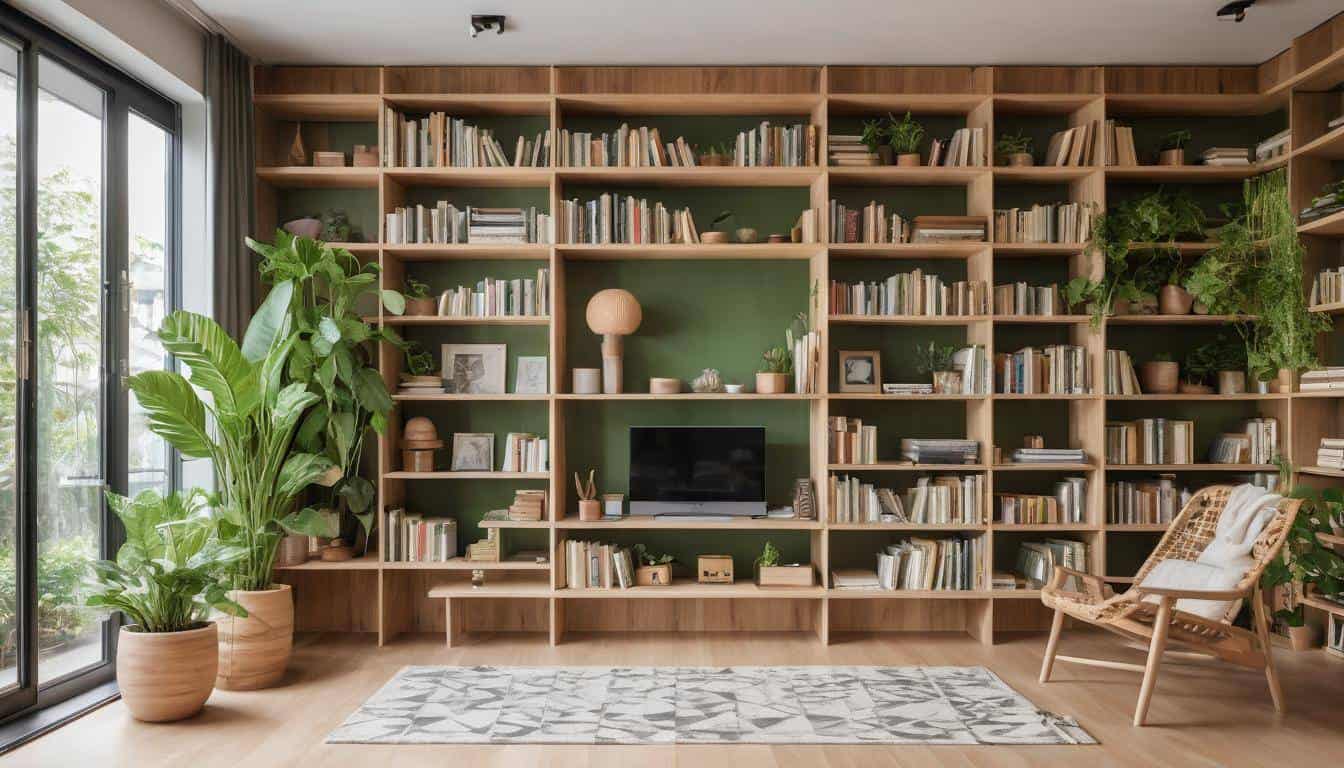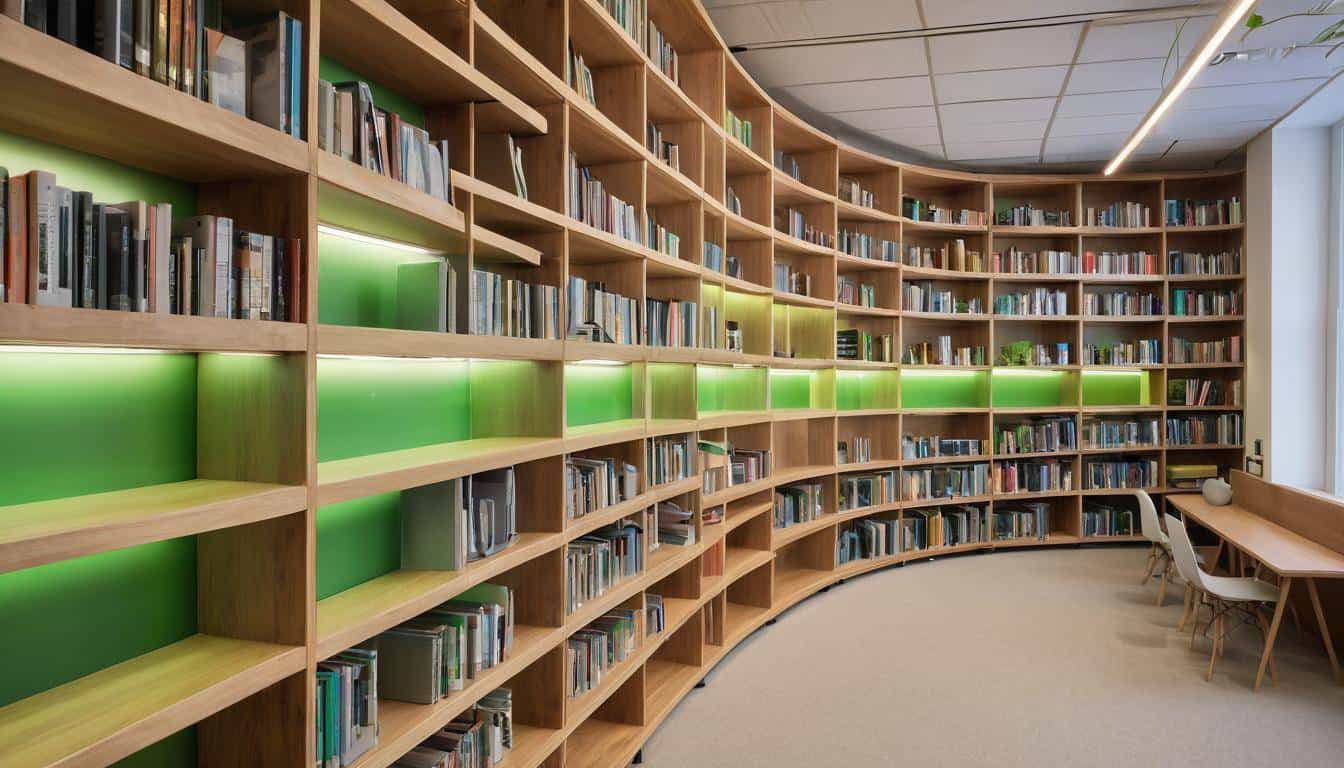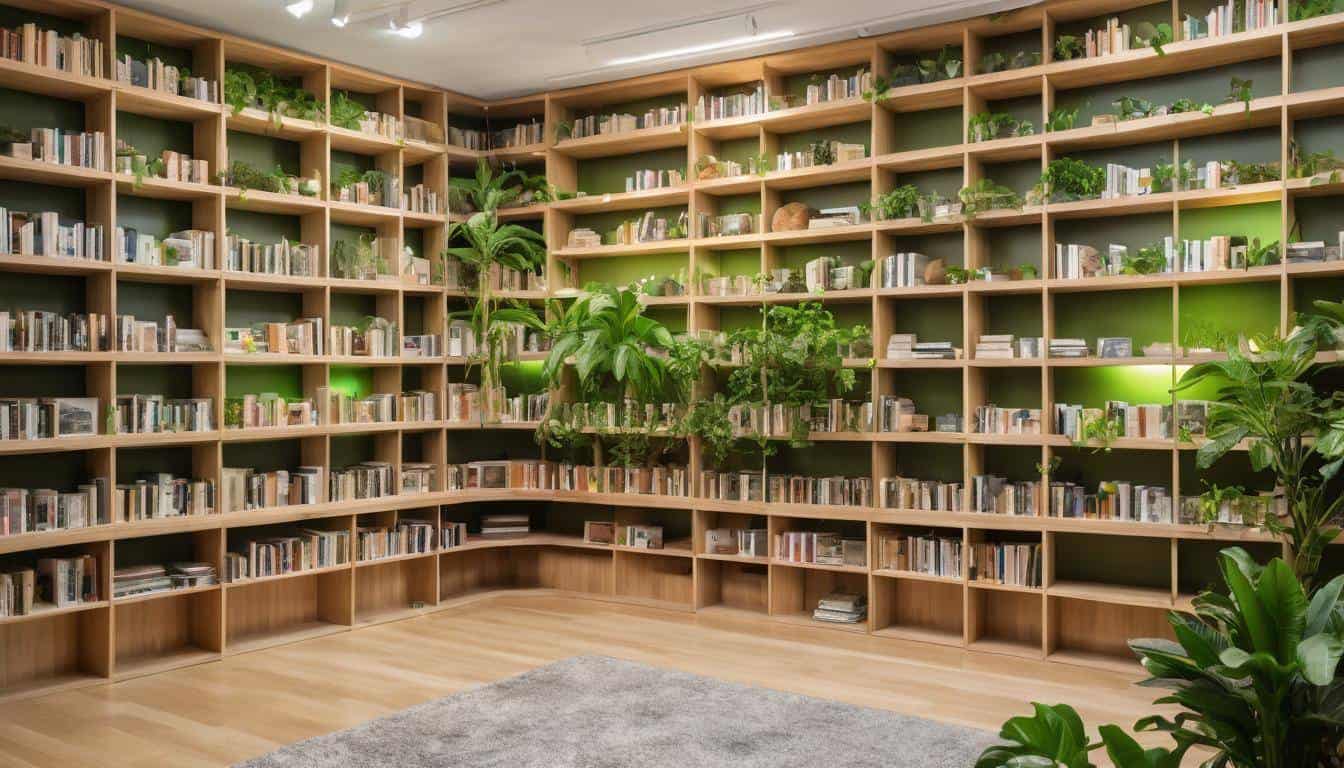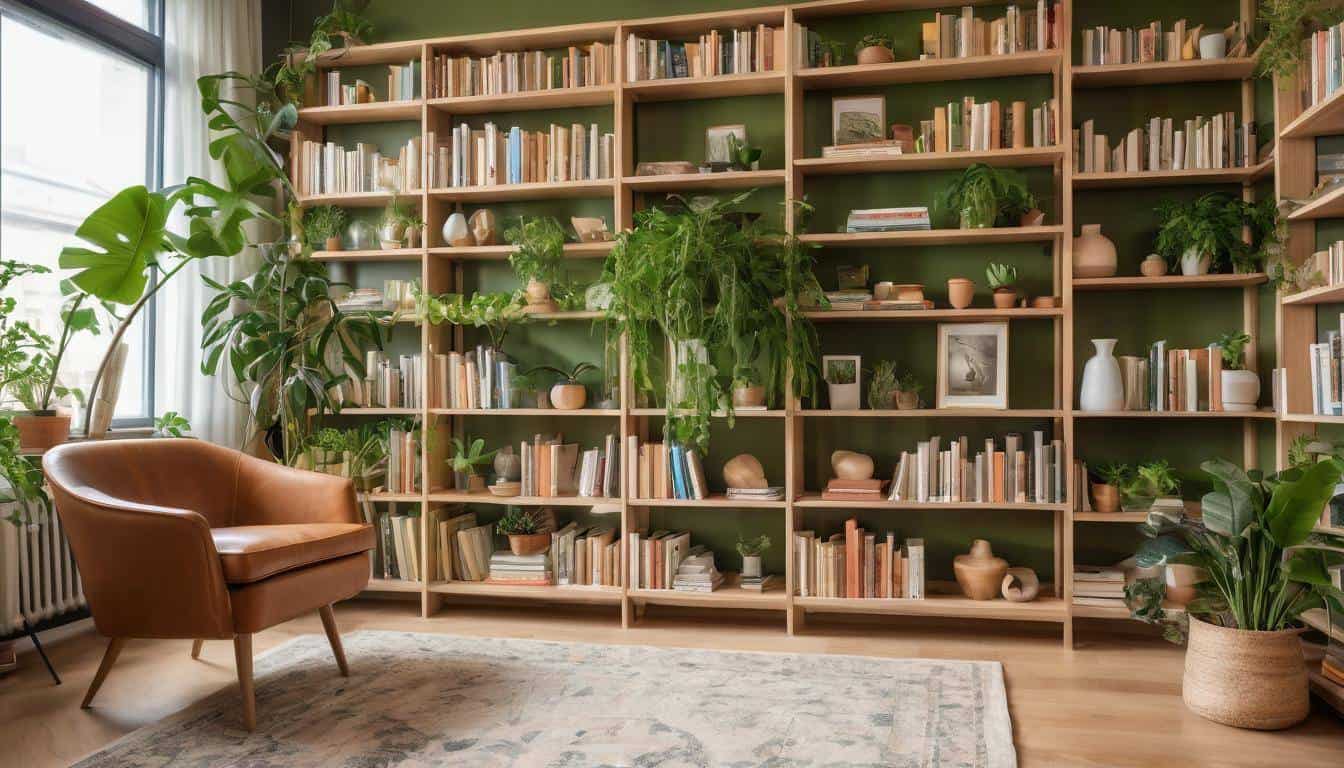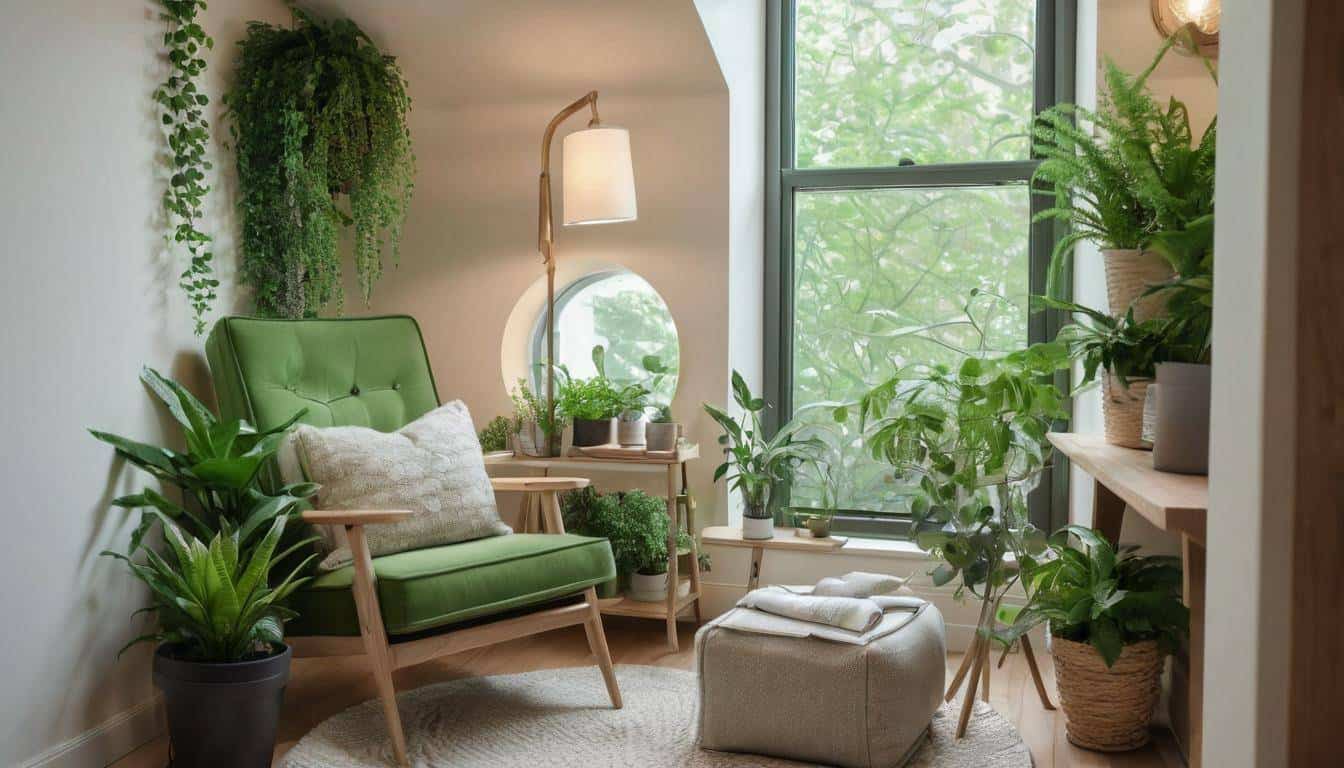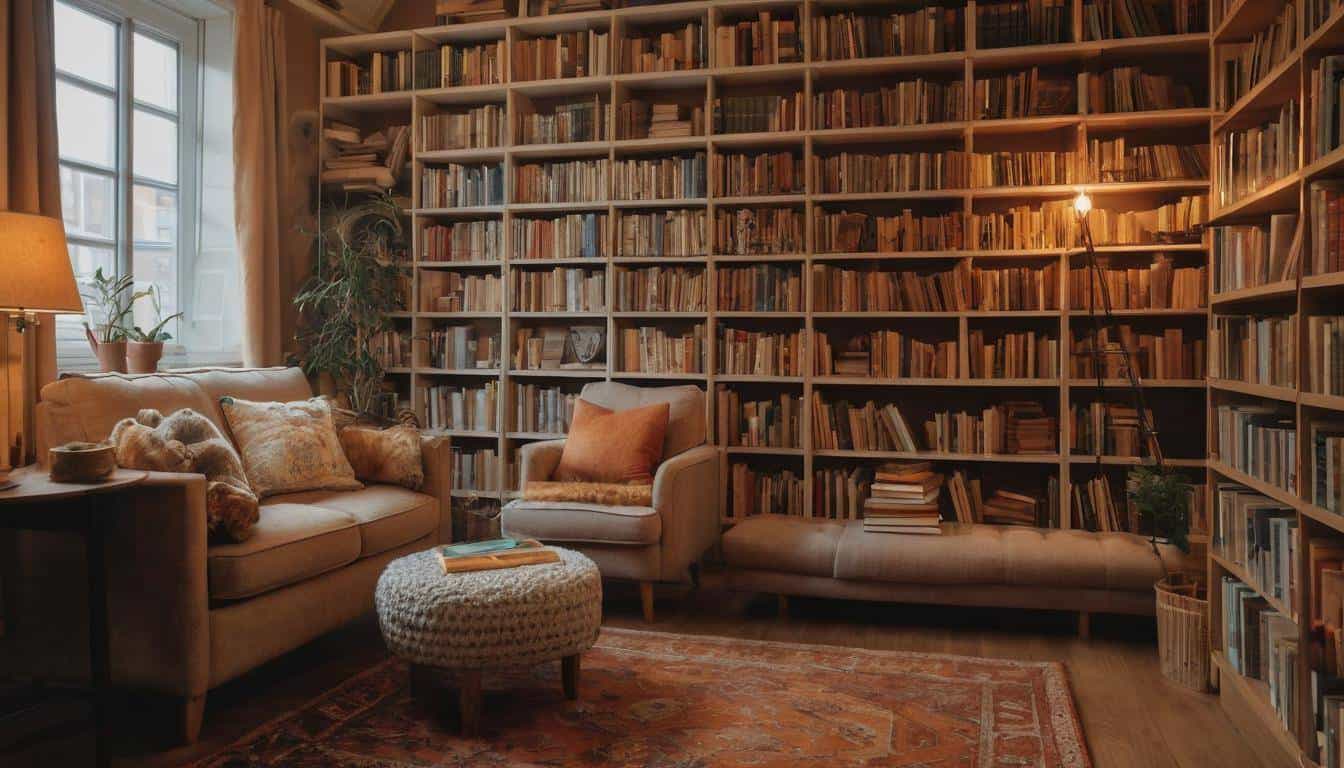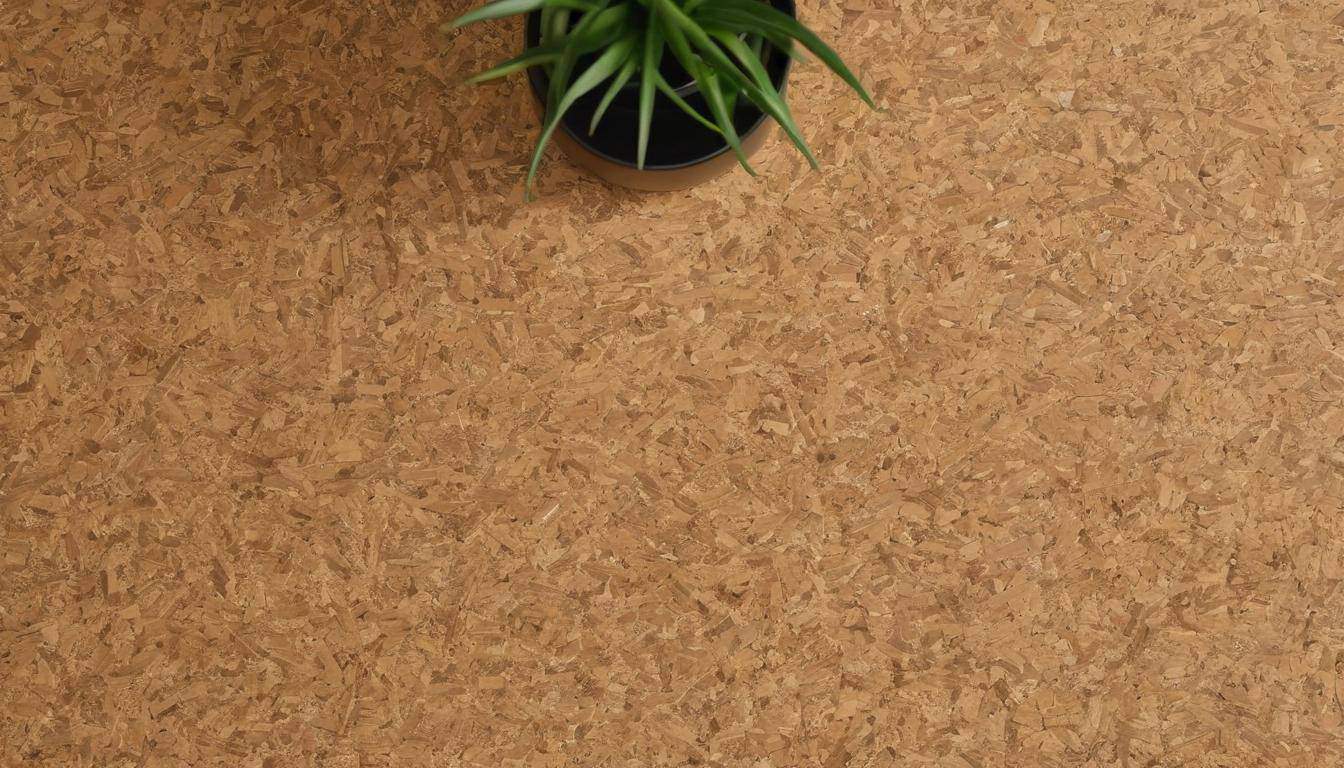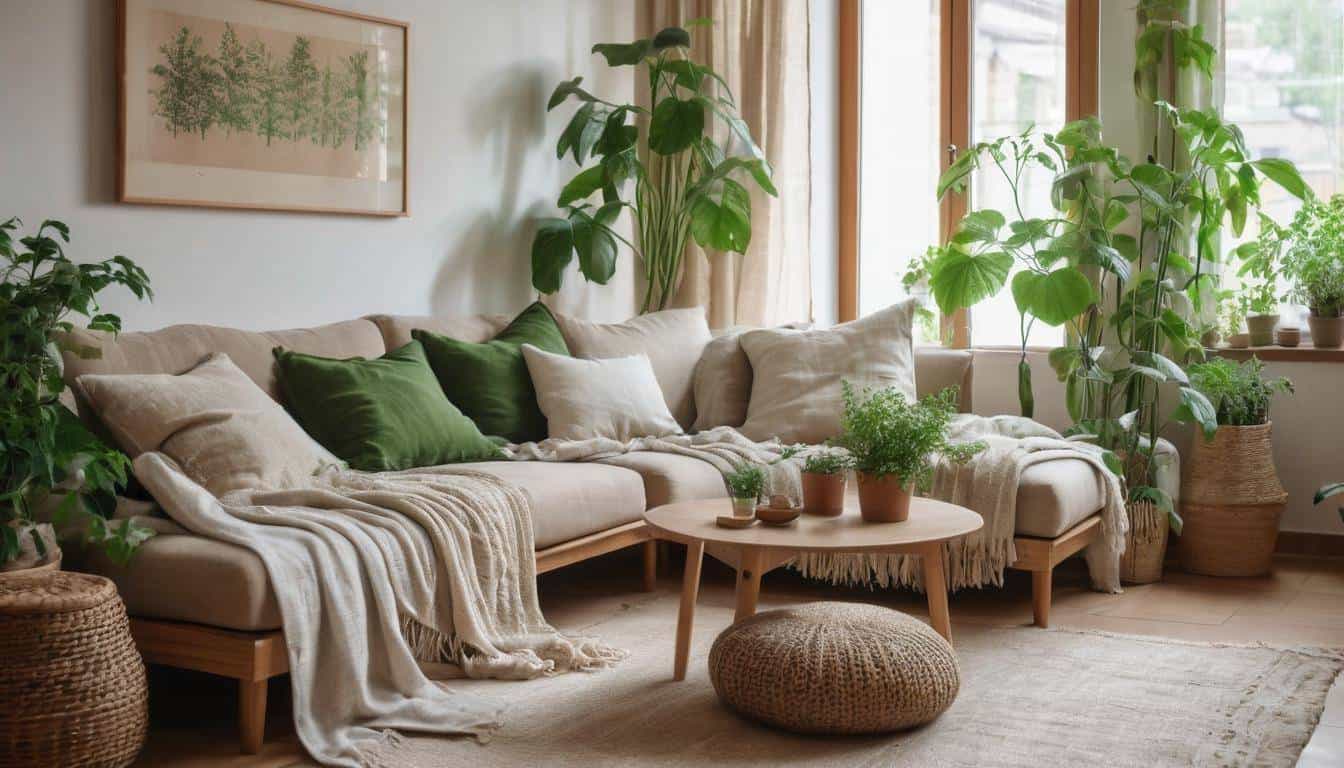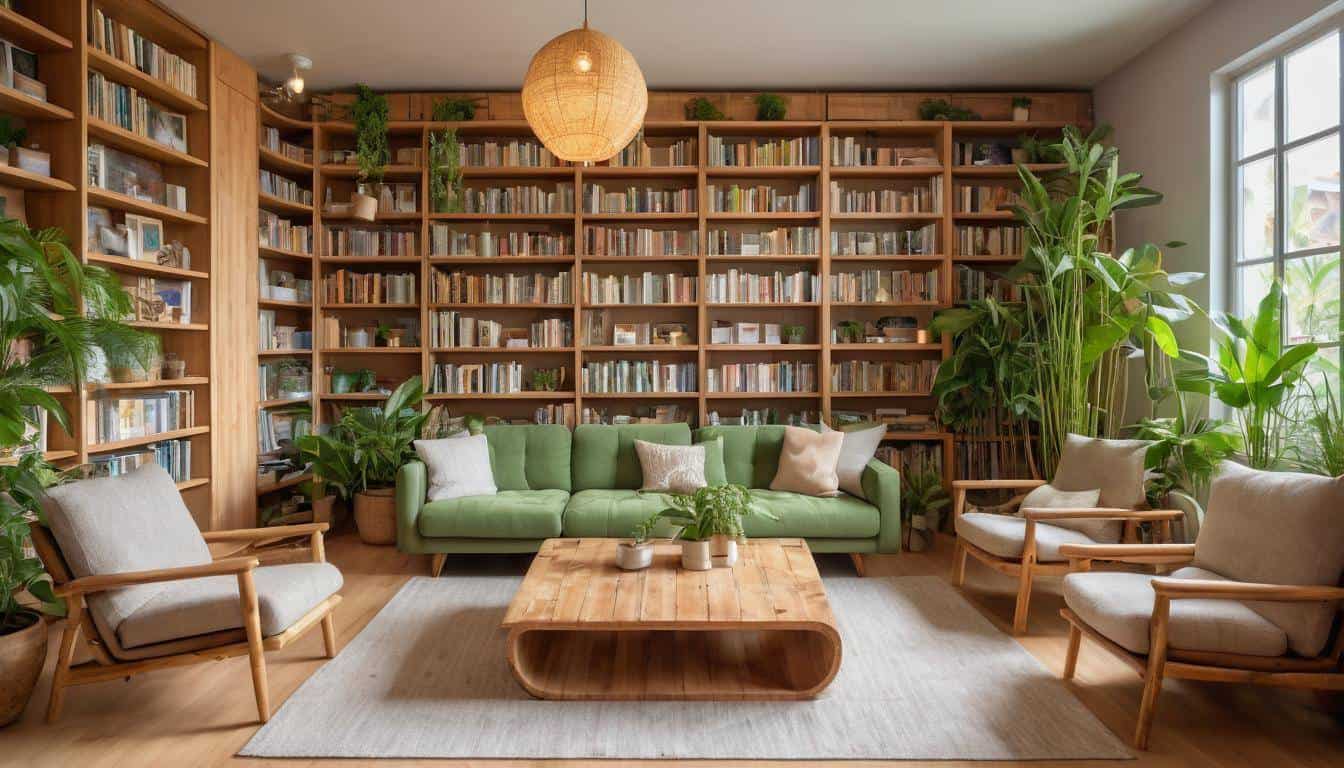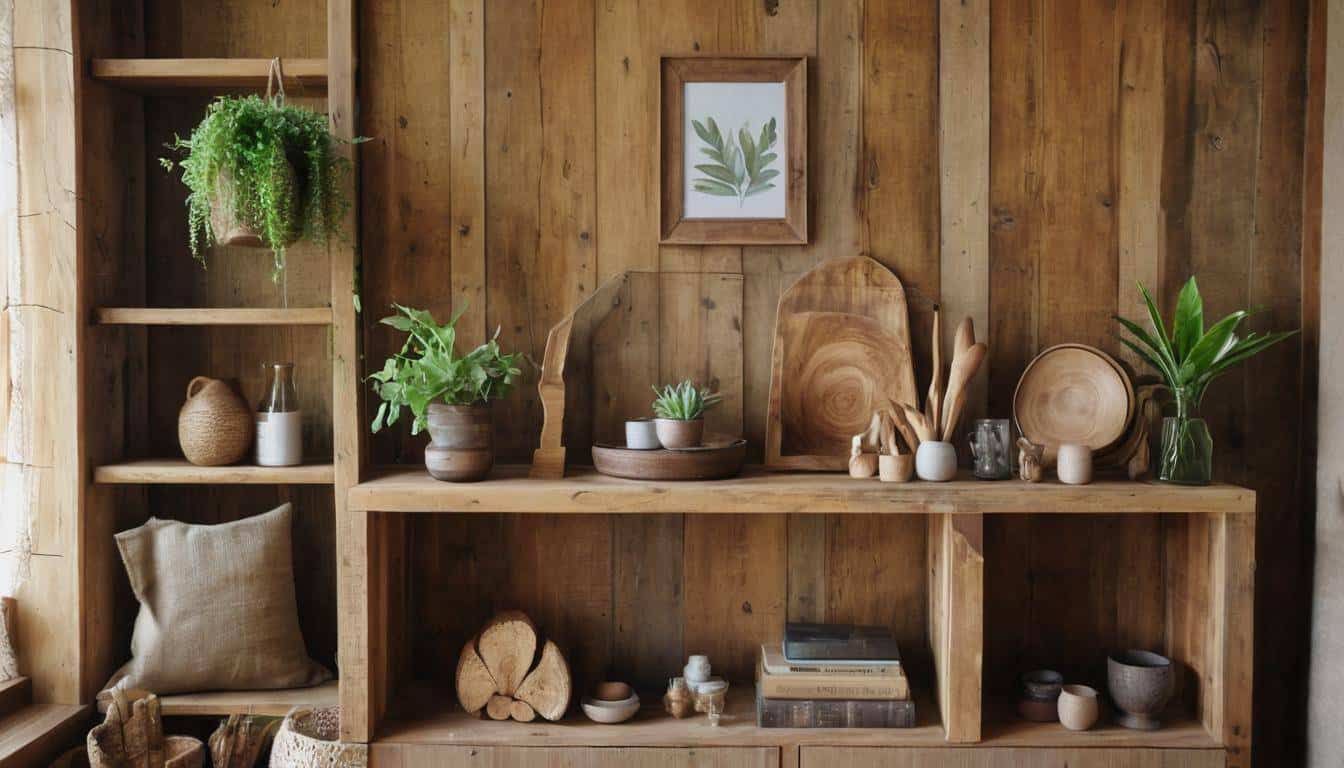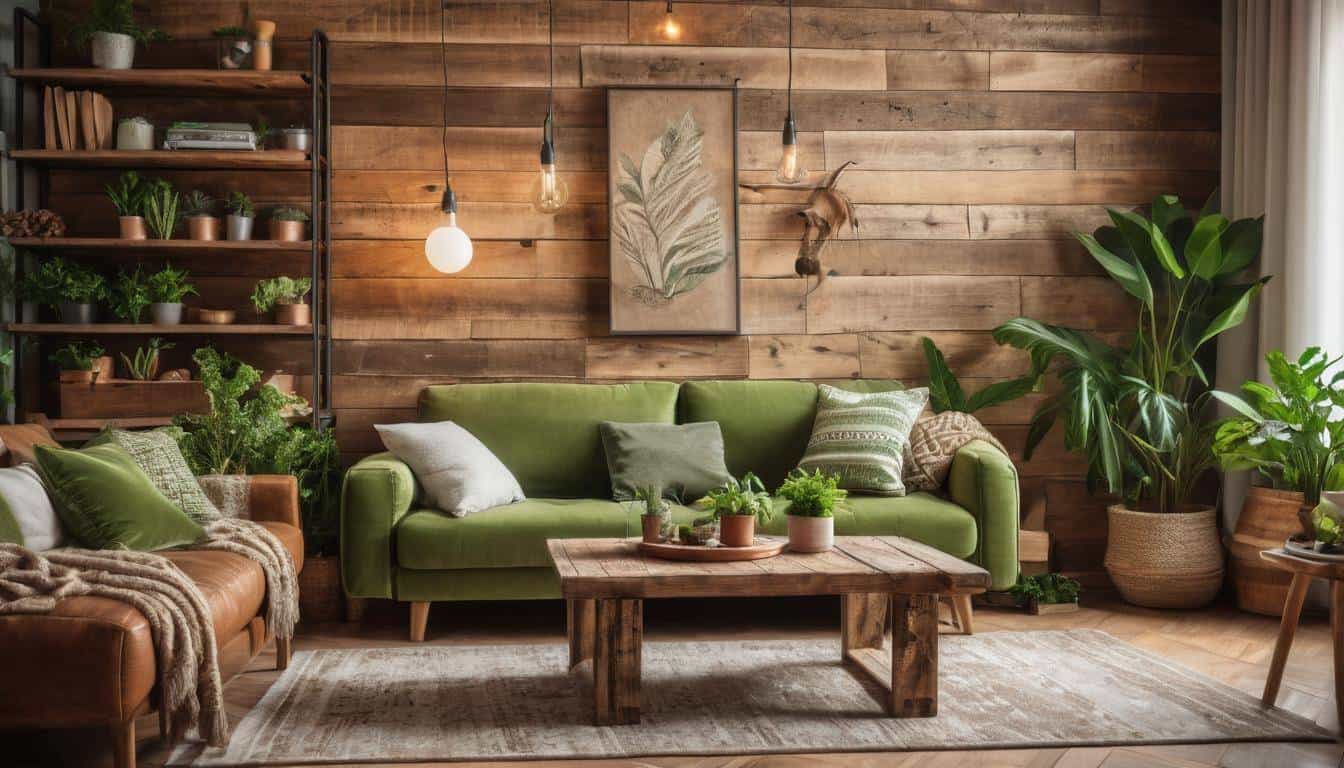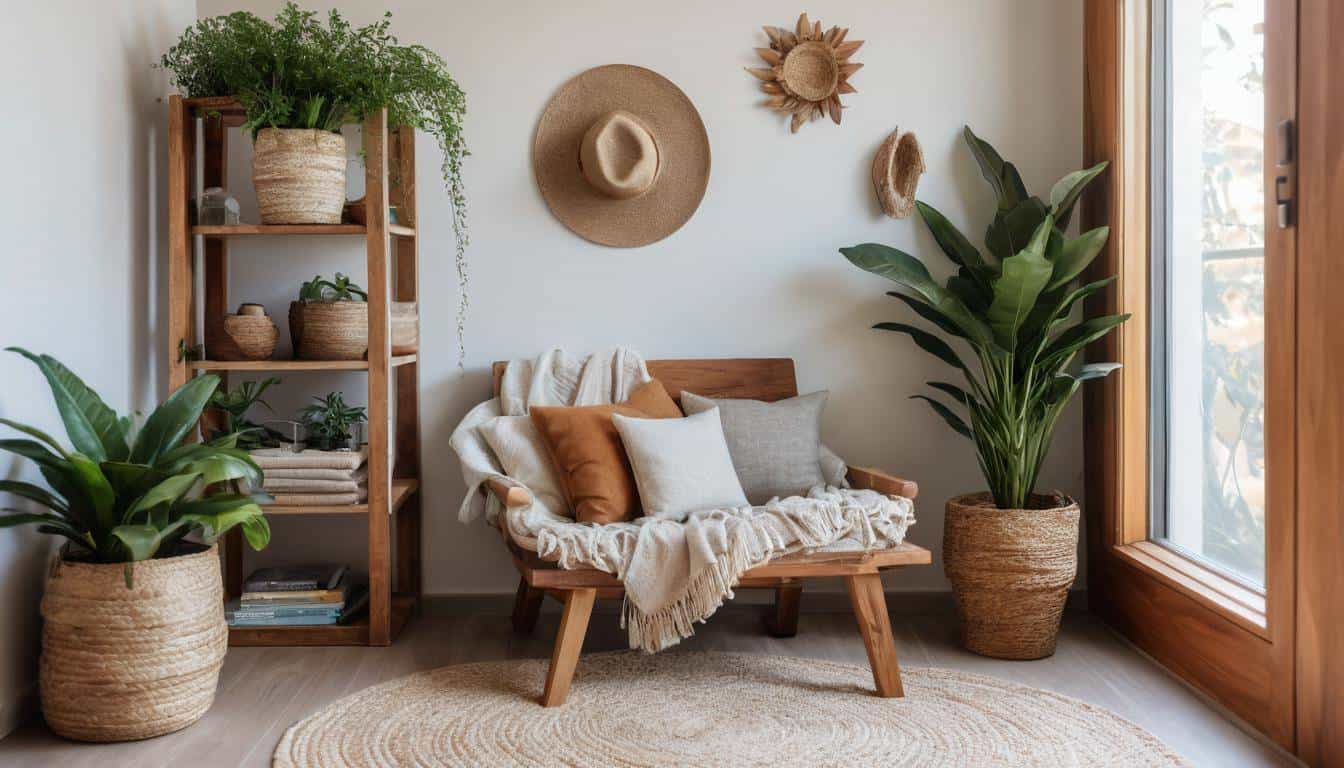Creating a green home library is an exciting journey. It involves using materials that support both the environment and a cozy reading space. Choices such as bamboo furniture, cork flooring, and energy-saving lights not only keep the air clean but also add unique charm to your reading corner. And quite unexpectedly, you can even toss in some recycled glass vases or lampshades for that extra sparkle! While green is the focus here, it’s worth noting that other color schemes like grey or wooden tones can also create stunning library spaces. Now, let’s start with understanding what the trends are these days for green home libraries.
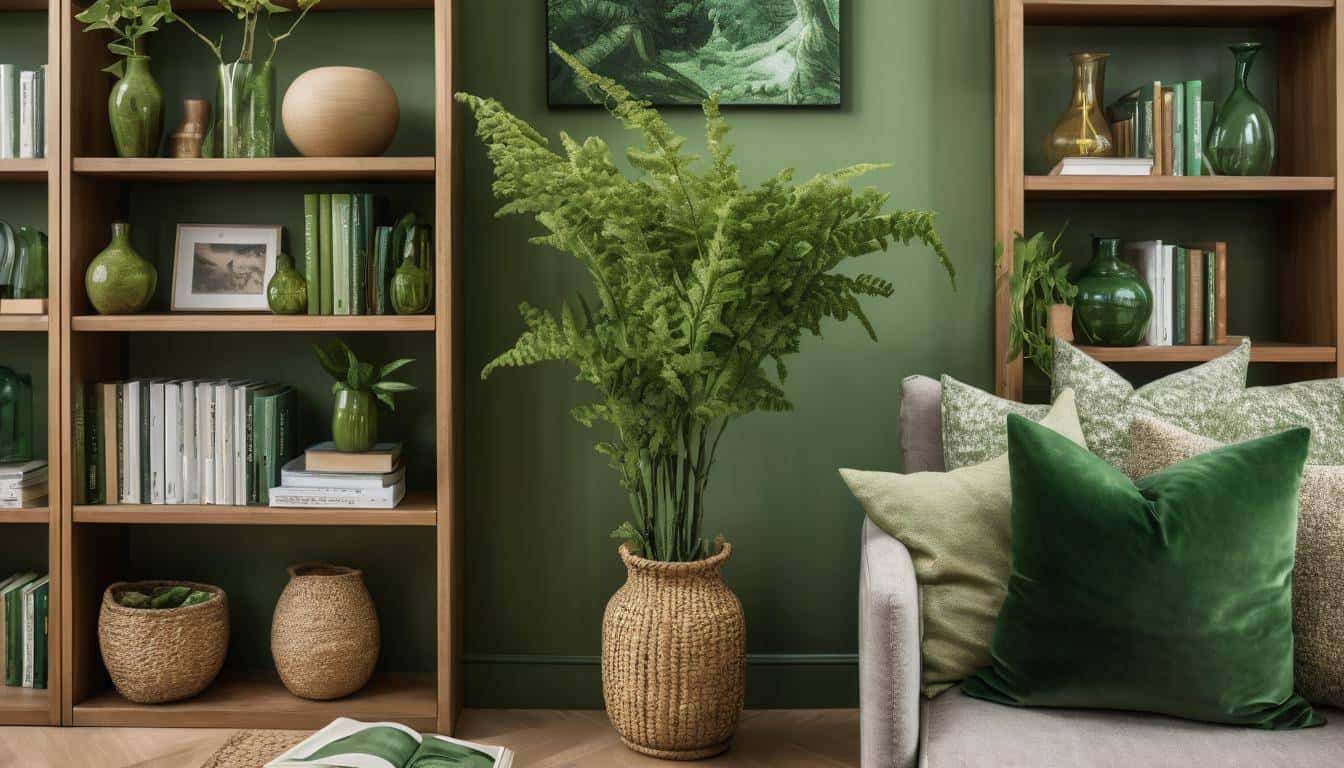
To create a green-themed home library, consider painting the walls and bookshelves in shades of green to establish a cozy and inviting atmosphere. You can also complement the green color with wooden furniture, framed pictures, chandeliers, and other design elements to achieve a charming and stylish ambiance. If green isn’t your preference, white or beige themes can offer a clean, classic look for your library space.
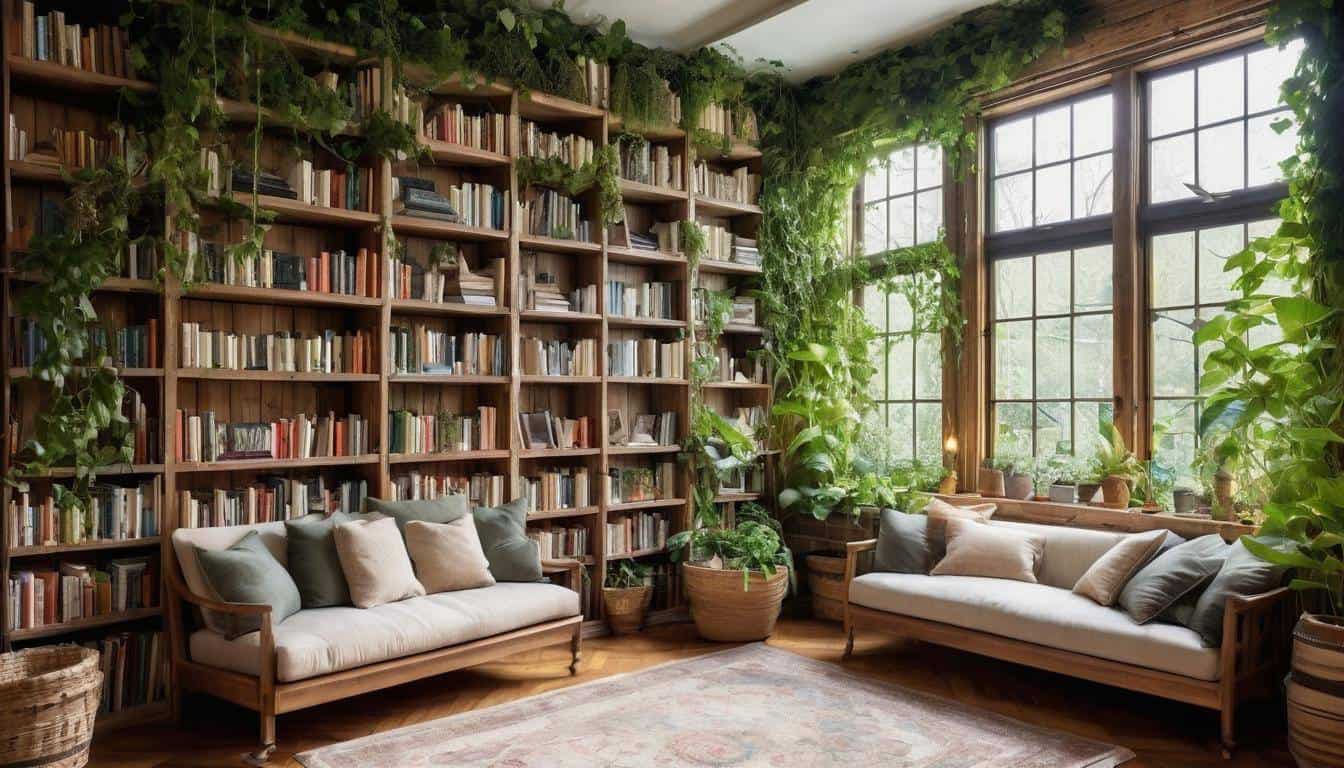
Green Design Trends for Home Libraries
Creating an eco-friendly home library extends beyond stacking your shelves with books on environmental sustainability. It involves crafting an environment that harmonizes with nature, sustainability, and mindfulness. A key element of eco-friendly design is the use of recycled or upcycled materials. Consider incorporating reclaimed wood for bookshelves or desks and repurposing old furniture to breathe new life into your library while reducing your environmental impact.
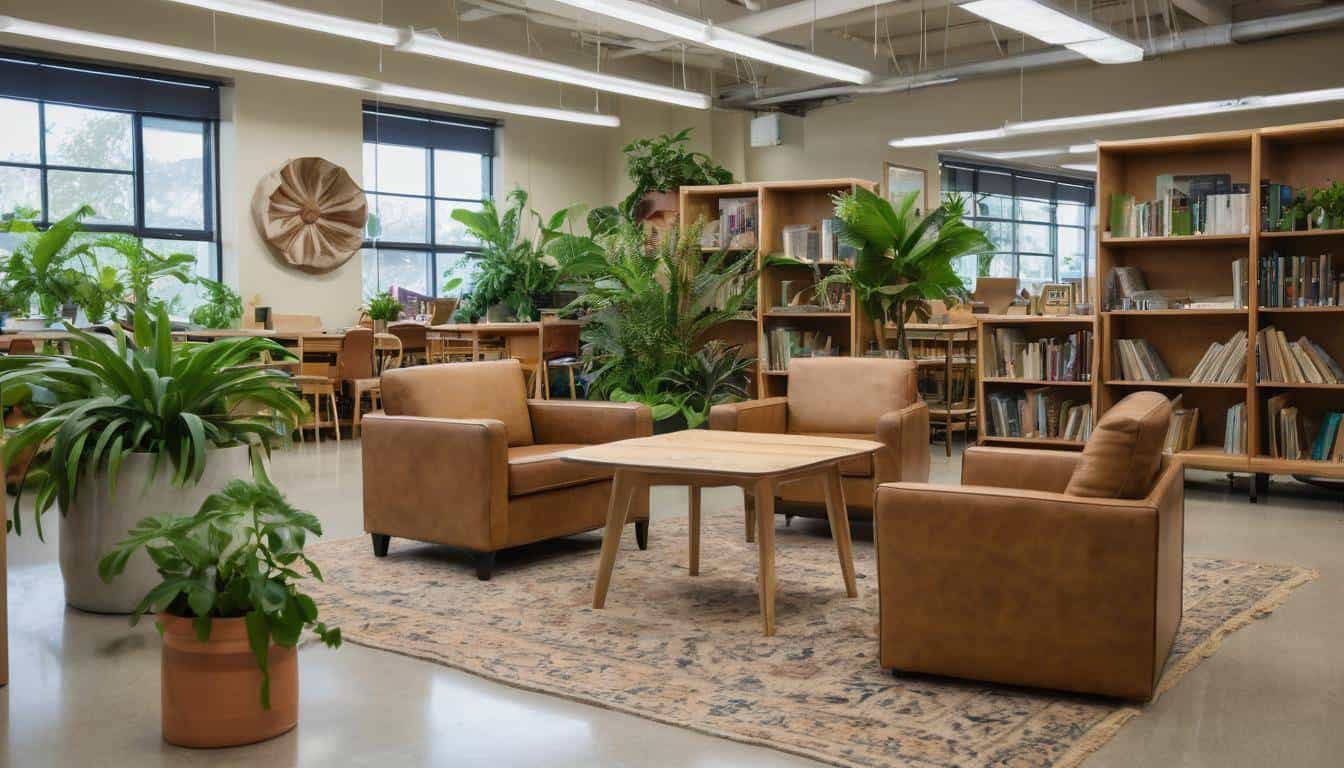
Embracing Sustainable Materials
When selecting furniture such as chairs, desks, and tables, prioritize pieces made from sustainable materials like bamboo, cork, or ethically sourced wood. These materials are not only durable and stylish but also contribute to the reduction of deforestation and promote responsible sourcing practices.
“Incorporating sustainably sourced materials into your home library entails making a conscious choice to support environmentally friendly practices.”
Energy-Efficient Lighting
Another important aspect of green design in home libraries is energy-efficient lighting. Opt for LED bulbs or fixtures with motion sensors to minimize energy consumption. By integrating natural light through strategically placed windows or skylights, you can reduce the dependency on artificial lighting during daylight hours, creating a more sustainable and inviting ambiance.
Harnessing Nature-Inspired Elements
Integrating nature-inspired elements such as houseplants into your home library can enhance the overall aesthetic while promoting a sense of tranquility. Plants not only purify the air but also introduce a calming and rejuvenating presence within the space. Consider incorporating sustainable decor items like cork coasters, organic cotton throws, or recycled glass vases to further accentuate the natural theme.
For instance, hanging macramé plant holders or displaying terrariums can infuse a touch of greenery into your reading nook, fostering a connection to the outdoors within your indoor sanctuary.
These green design trends provide a holistic approach to creating an environmentally conscious and visually appealing home library that promotes sustainable living while offering a serene retreat for book enthusiasts.
Sustainable Materials & Eco-Friendly Decor
When it comes to creating a green home library, the choices you make can have a significant impact on the environment. Sustainable materials, such as bamboo, reclaimed wood, or cork, are not only beautiful but also contribute to reducing environmental harm. Let’s explore some key considerations and options:
Sustainable Materials
Bamboo: This fast-growing grass is an excellent alternative to traditional wood. Bamboo is renewable and can be harvested without causing damage to the environment. It’s also incredibly durable, making it a practical and eco-friendly choice for shelves, desks, and other furniture pieces in your library.
Reclaimed Wood: Opting for reclaimed wood not only provides a distinctive character to your library but also reduces the demand for new timber. By repurposing old wood from barns, factories, or other sources, you’re preventing additional trees from being cut down. Each piece of reclaimed wood has its own unique history and adds a touch of nostalgia to your space.
Cork: Known for its natural texture and warmth, cork is a sustainable flooring option that comes from the bark of cork oak trees. Choosing cork for your library floor helps preserve these valuable trees while providing an elegant and comfortable surface for walking and reading.
By incorporating these sustainable materials into the design of your library, you’re not just adding visual appeal; you’re also promoting responsible practices that support conservation efforts.
Eco-Friendly Decor
In addition to using sustainable materials, eco-friendly decor choices can further enhance the environmental consciousness of your library. Consider these options:
Non-Toxic Paint: Conventional paints often contain harmful chemicals known as volatile organic compounds (VOCs). Opt for non-toxic paint options that offer low or zero VOC content to minimize indoor air pollution and promote a healthier environment within your library.
Organic Textiles: From curtains to upholstery, choosing organic textiles made from natural fibers such as organic cotton or linen adds a touch of comfort while supporting sustainable farming practices. Look for certifications like Global Organic Textile Standard (GOTS) to ensure the authenticity of organic textile products.
Recycled Glass: When selecting accessories such as vases, lamp bases, or decorative objects, consider items made from recycled glass. By choosing recycled glass products, you’re diverting waste from landfills and reducing the demand for raw materials required for glass production.
With thoughtfully chosen sustainable materials and eco-friendly decor elements, your home library becomes more than just a space for books – it becomes a testament to your commitment to environmental preservation and responsible living.
Incorporating Houseplants into Library Design
Imagine walking into your green home library and being greeted by not only books but also an array of lush, healthy houseplants. It’s a simple touch, yet it adds so much to the overall atmosphere. But houseplants do more than just look pretty—they are natural air purifiers and can greatly enhance the air quality in your library. This all ties back to the goal of creating a healthier and more eco-friendly living space.
Houseplants have become a beloved feature in interior design over the years, and rightly so. They not only add a sense of serenity and tranquility, but they also complement the eco-friendly theme of your green home library. In addition to their aesthetic appeal, certain houseplants are particularly adept at removing toxins from the air, promoting cleaner and fresher indoor breathing environments.
When thinking about which plants to incorporate in your library, consider low-maintenance options that thrive in indoor environments. Peace lilies, snake plants, spider plants are fantastic choices for beginner botanists or those who simply lead busy lives. These select greens require minimal attention yet provide maximum benefits in terms of air purification and visual appeal.
Examples of suitable greenery include peace lilies, snake plants, or spider plants, which are low-maintenance and thrive in indoor environments.
By strategically placing these houseplants throughout your library, you effortlessly infuse nature into your space while promoting better respiratory health—an ideal match for any green home enthusiast. The presence of these green companions serves as a gentle nudge towards achieving a serene environment that encourages focus and relaxation. For a bold contrast, some homeowners even opt for a red-themed library with strategically placed plants for a striking visual impact.
The incorporation of houseplants extends beyond mere decoration—it’s a conscious decision to integrate nature’s inherent ability to cleanse the air within our homes. With this approach, the green home library truly becomes a sanctuary for literary escapades, nourishing both the mind and body in equal measure.
As we continue our exploration of eco-friendly spaces for book lovers, let’s now delve into the essential component that holds together any well-designed green home library—eco-friendly shelving.
All About Eco-Friendly Library Shelving
When establishing a green home library, it’s crucial to pay attention to the shelving. Eco-friendly library shelving is essential in building a sustainable and environmentally conscious space. The materials used in constructing these shelves play a vital role in reducing environmental impact while providing versatility and adaptability to accommodate a growing collection.
One of the key elements of eco-friendly library shelving is the use of sustainable materials such as FSC-certified wood or responsibly sourced metal. These materials ensure that the production process adheres to strict environmental standards, promoting responsible forest management and reduced environmental impact. Opting for FSC-certified wood demonstrates a commitment to supporting ethical and sustainable practices in sourcing materials for your home library.
Furthermore, consider modular and adjustable shelving systems made from recyclable materials. These options not only offer flexibility and adaptability as the library collection grows but also contribute to sustainable resource utilization, thereby minimizing waste.
For instance, companies like NUMI offer modular shelving solutions made from FSC certified wood and eco-solvent finishes. These customizable shelving systems are inspired by Japanese woodworking techniques and provide the flexibility to adjust and expand according to the evolving needs of your library collection.
These eco-friendly shelving solutions not only contribute to reducing environmental impact but also serve as a visual representation of your dedication to creating a sustainable home environment for you and your family.
By consciously selecting eco-friendly library shelving materials and systems, you are not only contributing to the conservation of natural resources but also setting an example of responsible environmental stewardship within your home.
Making mindful decisions about your eco-friendly home library extends beyond shelving. Let’s now explore how to craft a cozy, comforting green ambiance that complements your sustainable reading space.
Crafting a Cozy Comfort Green Ambiance
Think about your favorite place to read. Is it a cozy nook with soft blankets and natural textures that make you feel at peace? That’s exactly what we want to create in your green home library. It’s not just about having books on the shelf—your library should be a place where you feel welcomed by the environment itself.
Start with the floor. A wool or jute rug can help bring an organic feel to the room while providing you with a comfy surface to walk on. These natural materials are sustainable and create a sense of warmth underfoot.
Next, let’s talk about seating. Cotton or linen upholstery for your chairs is not just comfortable but also environmentally friendly. These natural fabrics are breathable and soft, giving your space an air of comfort while staying true to your eco-conscious theme.
To add an extra touch of eco-friendliness, consider using throws and cushions made from sustainable materials. Utilizing throws made from ethically sourced or recycled materials and cushions filled with natural, sustainable fillings like kapok or organic cotton can elevate the coziness of your space while aligning with sustainability principles.
Additionally, consider incorporating reclaimed wood accents into your library’s design. Whether it’s a cozy ottoman, an end table, or a bookshelf made from reclaimed wood, these pieces add character and a sense of history to your space while promoting environmental conservation.
Picture this: You’re wrapped up in a sustainably sourced throw blanket, nestled into a chair with an organic cotton cushion, surrounded by the soothing feel of natural materials and the texture of reclaimed wood. It’s like being enveloped in a cocoon of comfort while being part of an eco-friendly movement.
Creating this serene atmosphere isn’t just about aesthetics; it’s about setting up a tranquil space where you can curl up with a good book and escape from the world for a while.
So when it comes to crafting an environment that feels authentically welcoming in your green home library, remember that integrating natural textures and materials sustains comfort while aligning beautifully with your eco-friendly principles.
Incorporating sustainability into your home library is more than just creating an aesthetically pleasing space; it’s about building an inviting haven that promotes relaxation and reflection. Embracing eco-friendly choices transforms your reading nook into a serene retreat while contributing positively to the environment.

